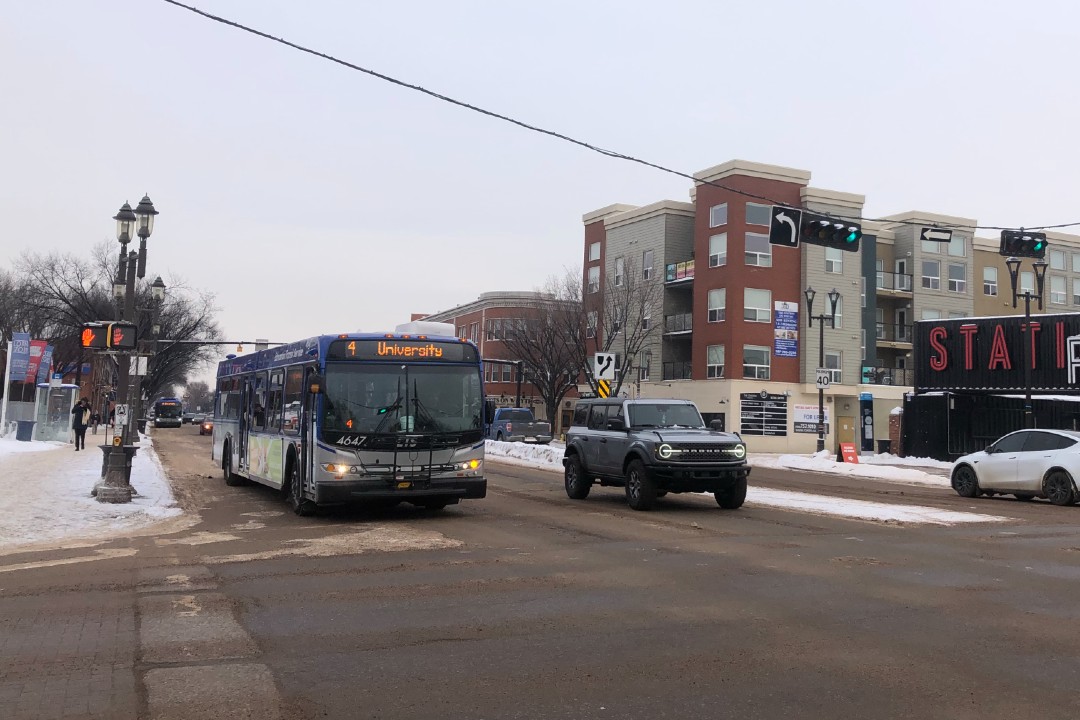 CBC Calgary
CBC Calgary
Albertans win bronze in 2-woman bobsleigh at World Cup final
Canada's Melissa Lotholz and Skylar Sieben claimed bronze in their two-woman bobsleigh race at the final World Cup event of the season on Sunday in Lillehammer, Norway. ...More ...

Canada's Melissa Lotholz and Skylar Sieben claimed bronze in their two-woman bobsleigh race at the final World Cup event of the season on Sunday in Lillehammer, Norway.
16 Feb 2025 18:44:19
 CBC Edmonton
CBC Edmonton
Northern Alberta beekeepers say tariffs on honey would damage already fragile industry
Beekeepers in Alberta's northwest are worried about the impact of tariffs on both sides of the border, saying the industry is on 'life support' already due to hive loss and slim profit margins. ...More ...

Beekeepers in Alberta's northwest are worried about the impact of tariffs on both sides of the border, saying the industry is on 'life support' already due to hive loss and slim profit margins.
16 Feb 2025 14:00:00
 CBC Edmonton
CBC Edmonton
Rural Alberta landowners push back over proposed route for Atco gas pipeline
A group of property owners in a remote area west of Edmonton are pushing back against one of the proposed routes for an Atco natural gas pipeline, saying it threatens wildlife. ...More ...
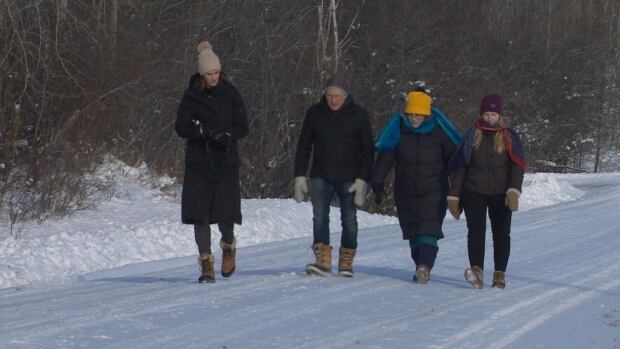
A group of property owners in a remote area west of Edmonton are pushing back against one of the proposed routes for an Atco natural gas pipeline, saying it threatens wildlife.
16 Feb 2025 12:00:00
 CBC Calgary
CBC Calgary
Wind chills prompt extreme cold warning in Calgary
Wind chill values between -40 and -45 are expected Saturday night though they will be somewhat moderate during the daytime hours, according to Environment Canada. ...More ...

Wind chill values between -40 and -45 are expected Saturday night though they will be somewhat moderate during the daytime hours, according to Environment Canada.
15 Feb 2025 23:41:16
 CBC Calgary
CBC Calgary
Alberta government to build 6 schools in Calgary area, 5 in Edmonton
The construction of 11 new schools in Edmonton and the Calgary region will happen through public-private partnerships, the provincial government says. ...More ...

The construction of 11 new schools in Edmonton and the Calgary region will happen through public-private partnerships, the provincial government says.
15 Feb 2025 18:01:00
 CBC Edmonton
CBC Edmonton
Crown seeks 4½ years in prison for man who pleaded guilty in child porn case
Lawyers presented their sentencing arguments Friday for Aarron Kowalchuk, a 35-year-old man who pleaded guilty in June to making child pornography and luring. ...More ...

Lawyers presented their sentencing arguments Friday for Aarron Kowalchuk, a 35-year-old man who pleaded guilty in June to making child pornography and luring.
15 Feb 2025 16:00:00
 CBC Edmonton
CBC Edmonton
Downtown biz group worries Edmonton bridge construction crunch could hurt city's core
A downtown Edmonton business advocacy group is worried about how a series of planned bridge closures due to construction could impact the city. ...More ...
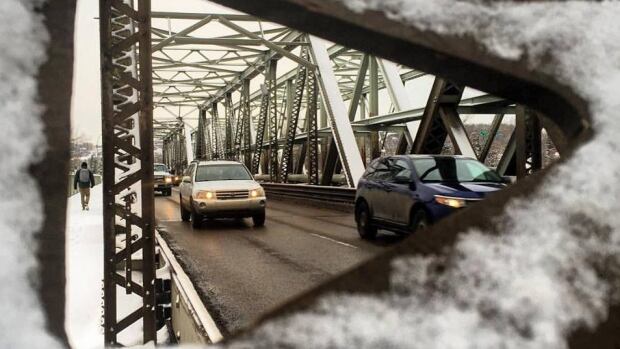
A downtown Edmonton business advocacy group is worried about how a series of planned bridge closures due to construction could impact the city.
15 Feb 2025 15:00:00
 CBC Edmonton
CBC Edmonton
How some organizations are changing course on equity, diversity and inclusion initiatives
Some organizations are eliminating EDI positions, rebranding them, or rolling back their funding. It comes in the midst of a polarizing political climate and increasing backlash to EDI programs. ...More ...

Some organizations are eliminating EDI positions, rebranding them, or rolling back their funding. It comes in the midst of a polarizing political climate and increasing backlash to EDI programs.
15 Feb 2025 14:00:00
 CBC Calgary
CBC Calgary
Province investigating report 2 young cougars may have been orphaned by hunters near Canmore
Professional wildlife photographer and co-founder of the Exposed Wildlife Conservancy, John E. Marriott, says he has been tracking the mother cougar and cubs from multiple litters for the past four y ...More ...

Professional wildlife photographer and co-founder of the Exposed Wildlife Conservancy, John E. Marriott, says he has been tracking the mother cougar and cubs from multiple litters for the past four years in the forest near his home in Canmore.
15 Feb 2025 12:00:00
 CBC Calgary
CBC Calgary
'Without journalism, it's dark': Pouring their hearts into ethnic media, coping with rapid change
The ethnic media sector suffers from the same business challenges dogging mainstream media, but it’s innovating and finding new ways to serve the need. Research suggests these outlets help immigrant ...More ...

The ethnic media sector suffers from the same business challenges dogging mainstream media, but it’s innovating and finding new ways to serve the need. Research suggests these outlets help immigrant communities lean in and get more civically engaged.
15 Feb 2025 10:00:00
 The Sprawl Calgary
The Sprawl Calgary
The battle of Glenmore Landing
Sprawlcast ...More ...
Sprawlcast is Calgary’s in-depth municipal podcast. Made in collaboration with CJSW 90.9 FM, it’s a show for curious Calgarians who want a deeper understanding of the city they call home.
If you value in-depth Calgary journalism, support The Sprawl so we can do more stories like this one!
BETTY BOURQUE: You are destroying our parklands by siding with developers.
HANITA SIMARD: The real question is: Do we preserve remnant strips of land or build homes for thousands of Calgarians?
MELANIE HORKAN: We want to put the most residents that we possibly can right next to the BRT station.
TRACY CHERNIAWSKY: Building apartment towers in an affluent neighbourhood will not be affordable housing.
COUNCILLOR DAN McLEAN: I think we should listen to the people on this one and please don't support this.
JEREMY KLASZUS (HOST): In December of 2024, Calgary city council had a decision to make on whether or not to approve high-density housing by a shopping centre at the southeast corner of the Glenmore Reservoir.
TARA NELSON (CTV CALGARY): A contentious proposal to build high-rise towers at Glenmore Landing will not move forward in its current form. Calgary councillors defeated the application in a close vote this morning.
KLASZUS: RioCan, the Toronto-based real estate investment trust that owns Glenmore Landing, wanted to build six mixed-use towers with nearly 1,200 housing units. It would have been an example of transit-oriented development, something city hall has talked about for decades but struggled to make happen.
COUNCILLOR KOURTNEY PENNER: We’ve been having a lot of conversations about where growth in the city should be happening. We continue to say things like growth should happen on nodes and corridors next to our primary transit network. And what I heard from my council colleagues was that even though those were all of the markers and the indicators of this development, they found something amiss with it.
KLASZUS: This is something that came up repeatedly during the blanket rezoning public hearing in the spring of 2024.
CHARLENE WAUGH: I ask city council to not approve blanket R-CG rezoning. Please continue to abide by principles that were originally laid out in the 2009 Municipal Development Plan to focus growth on nodes and corridors...
PETER COLLINS: Higher density development along the main streets, the activity centres, the the transit nodes—that's where it should be, that’s where it makes sense to do it...
ROGER SMITH: What are the solutions? Corridors and nodes. Why don’t we develop those areas first?

KLASZUS: Glenmore Landing is a retail node on an underused BRT line at the corner of two busy roads, 90th Avenue and 14th Street S.W. The Jewish Community Centre is across the street to the south, and Heritage Park and the Rocky View Hospital are not far to the north.
The RioCan towers were proposed for two nondescript parcels of green space between Glenmore Landing and its neighbouring roadways. If you drive by, you’d likely not give them much thought or notice at all.
But there is more to these parcels than meets the eye. They are leftover pieces from an on-again, off-again fight that goes back to the 1960s over whether or not this location should have multifamily housing. Developers have been trying to build high-rises here for well over half a century, with various plans that have provoked fierce resistance in nearby residents. And more than six decades after the first proposal, that resistance hasn’t subsided.
The local community association is taking the city to court over these parcels as we speak in an effort to block future development here.
Developers have been trying to build high-rises here for well over half a century.
Calgary Herald journalist Vern Simaluk, writing in 1967, said the “Glenmore Park apartment complex controversy is shaping up to be a rezoning battle royale.” He was right about that, many times over. Another journalist in the 1970s called it “the great land battle of the Glenmore Reservoir.”
It’s a decades-long saga about class, conservation, and community politics. History is repeating itself at Glenmore Landing—but with some new twists.
‘Go build it on some other swamp’: The birth of an elite district in the 1960s
Glenmore Landing sits on the eastern edge of Bayview, an affluent neighbourhood of luxury homes on the southern shores of the Glenmore Reservoir. Like many neighbourhoods in Calgary’s “donut of decline,” its population peaked in the 1980s and has gone down since.
Bayview is one of the wealthiest communities in Calgary. Its population of about 670 lives between Glenmore Landing to the east and the Glenmore Sailing Club to the west. Bayview’s median household income is nearly $300,000, three times the citywide median household income. And there are no renters in Bayview, according to city data, which draws from the 2021 census. All are owner households.
When Bayview was built in the late 1960s, it was marketed as an “exclusive community” with estate-sized lots—“a world of luxury and finer living in the parkland atmosphere of Glenmore Lake.”
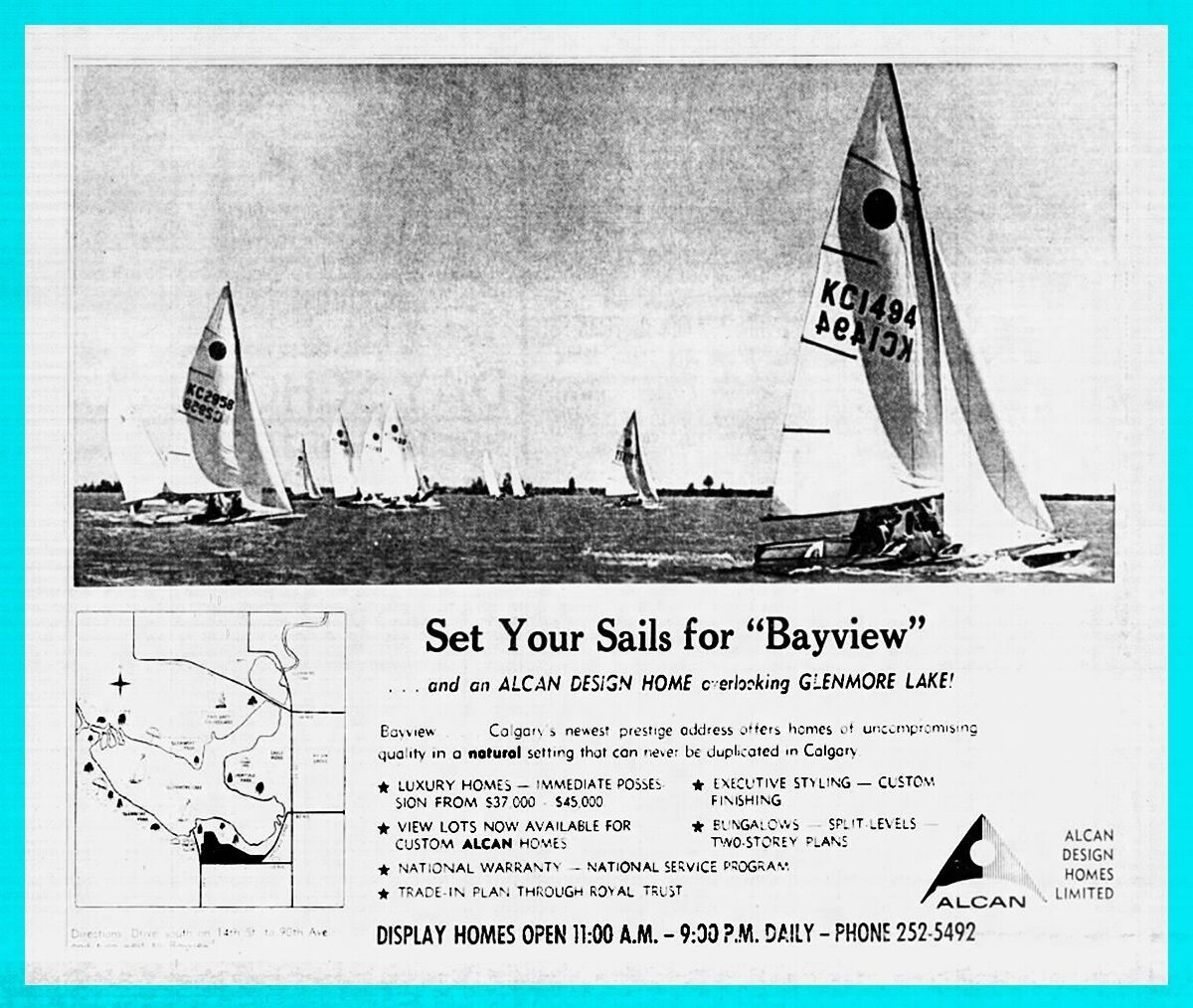
With the neighbourhood backing onto the pathways of the Glenmore Reservoir, it’s normal for residents to spot coyotes, bobcats and even the odd black bear.
But even before Bayview got built, a developer wanted to build high-rise apartment towers on the boggy, low-lying land on the eastern shores of the reservoir, where Glenmore Landing is today. This was in 1963, when Calgary was a city of fewer than 300,000 people.
In the 1960s, Calgary was sprawling in every direction. Car-dependent subdivisions like Marlborough and Mayland Heights were going up in the northeast; Dalhousie and Brentwood in the northwest. A ways south of the reservoir, developers were building the subdivisions of Braeside, Willow Park and Southwood.
Amidst all this greenfield growth, Kelwood Corporation wanted to build 2,000 apartment units at the east end of the reservoir. But some residents in the nearby communities of Kelvin Grove, Eagle Ridge and Haysboro raised concerns about traffic, parking and losing their mountain views. They made their views known to city hall.
“We don’t oppose the project,” one resident told city council, according to the Herald. “We oppose the location. Go build it on some other swamp.”
Apartments, residents argued, would degrade the district. They belonged downtown. City council voted down the high-rise plans in 1963, a decision that would be re-made many times after.
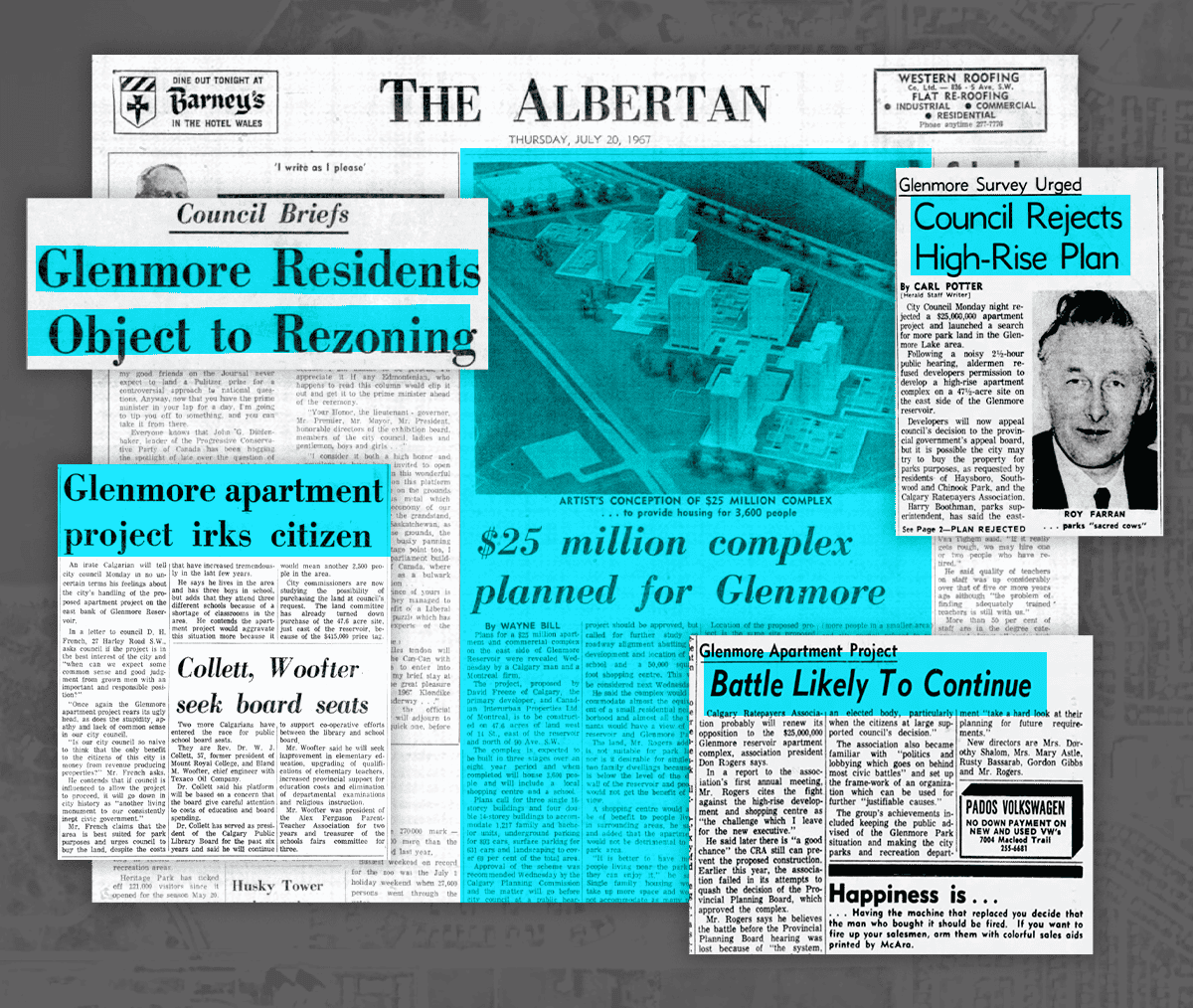
‘A matter for extreme regret’: Luxury homes on the reservoir shores
By 1967, Bayview’s first phase was under construction on the reservoir’s southern shores. And as the first luxury homes went up, the city’s parks superintendent, Harry Boothman, said rezoning that land so close to the reservoir had been a costly blunder by city hall.
The Herald also expressed dismay that “the Bayview subdivision... will see new homes built so close to the lake there will only be room for a pedestrian walkway between back yards and the bank of the lake.” The Herald editorial board called Bayview’s proximity to the water “gross carelessness” and “a matter for extreme regret.”
“No one can blame private citizens for wanting to build lakeside homes if they can swing the deal. But it was up to the city to protect public rights and see to it that the lakeside was set aside for public park purposes. This kind of mistake simply cannot be allowed to happen again. It should not have happened with the Bayview development.”
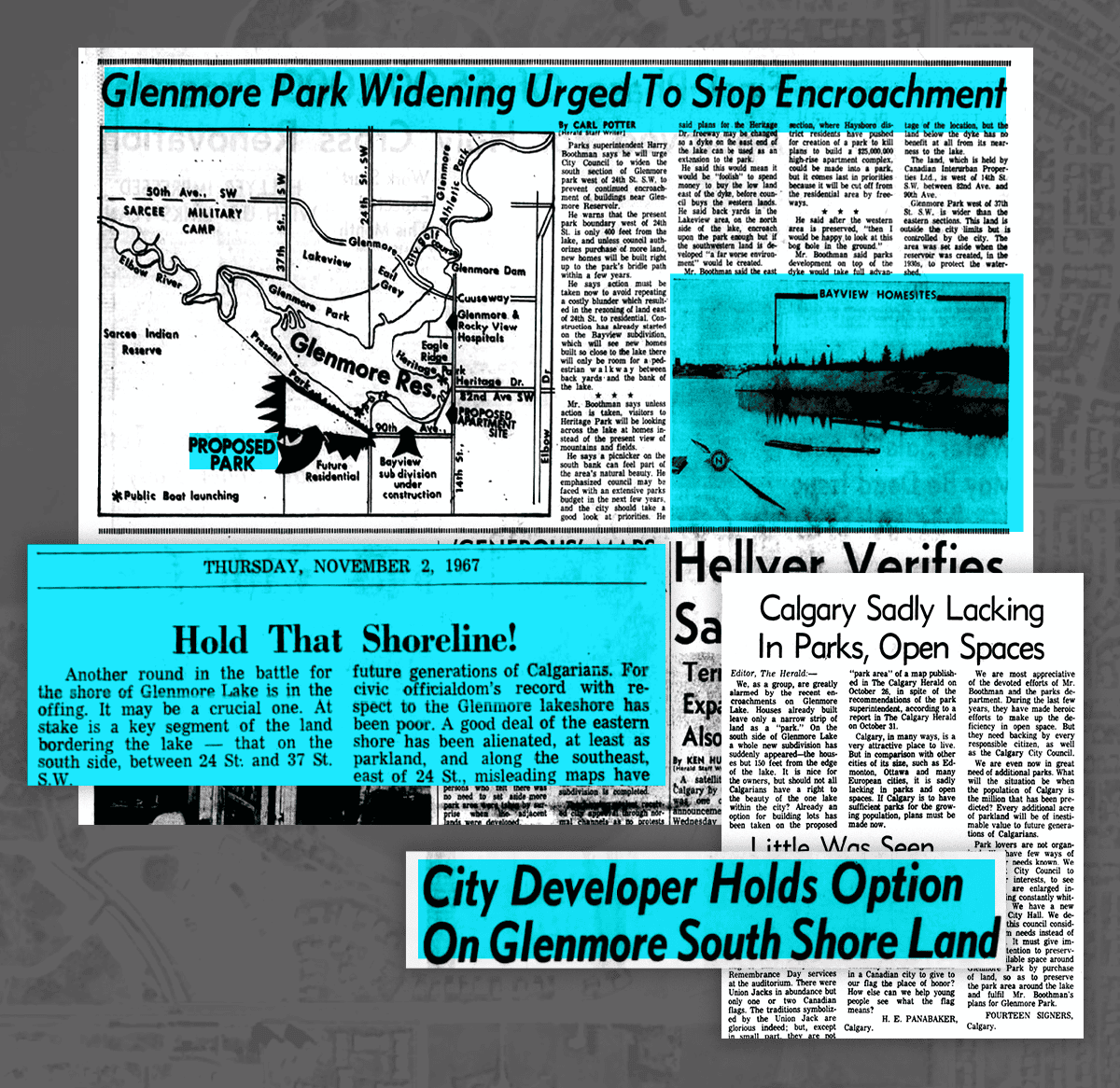
After the “Bayview blunder,” the push was on to protect the reservoir from further residential encroachment.
In 1967, the city considered buying the land east of Bayview, where Glenmore Landing is today, but didn’t. Instead, it bought 55 acres west of 24th Street from Alcan, the developer of both Bayview and Oakridge. This ensured that homes west of 24th Street wouldn’t be so close to the water when they eventually got built in the ’70s.

That’s why, when you go through South Glenmore Park today, it’s nice and wide west of 24th Street but much narrower by Bayview, where multimillion-dollar homes back onto lakeside parkland.
In 1967, another developer put forward plans for the east side of the reservoir, envisioning a high-rise commercial and apartment complex, complete with a school. The Calgary Local Council of Women weighed in, expressing “strong disapproval” of non-park development on the site: “It is vital that we preserve as much park area as possible.”
The Herald also came out against the project, saying “all remaining undeveloped fringe land around Glenmore should be preserved as a green belt for the enjoyment of all citizens.”
Residents of Hayboro organized against the latest high-density development. “Once again the Glenmore apartment project rears its ugly head,” wrote one resident, “as does the stupidity, apathy and lack of common sense in our city council.”
After a rowdy public hearing, city council once again voted no.
No one can blame private citizens for wanting to build lakeside homes if they can swing the deal. But it was up to the city to protect public rights.
‘It would be wrong’: Bayview residents fight multifamily housing in the 1970s
It went on like this for years. By 1974, another developer, Campeau Corporation, now owned the land between the reservoir and 14th Street. The Ottawa-based developer wanted to build seven high-rise towers. These plans also went nowhere.
By the time Campeau revamped its plans to two towers and 500-plus townhouses instead, in 1976, some of the strongest opposition came from residents in Bayview. The prestigious lakeside neighbourhood was now built out and its new residents were outraged at the prospect of high-density housing going in nearby.
City council was inundated with letters from Bayview.
“The existing homeowners are entitled to have their chosen way of life preserved,” wrote one resident. Another wrote that those “who purchased property in the Bayview area paid a premium for its amenities and it would be wrong for council to take any action which would retroactively nullify the basis for such premium.” Still another Bayview resident warned that “odds are good that this development will become a virtual ‘ghetto.’”
The existing homeowners are entitled to have their chosen way of life preserved.
Not all the opposition was from Bayview. Then as now, a lot came from neighbouring communities like Haysboro, Pump Hill and Palliser. And some of what was said in 1976 is almost word for word what was said in 2024, a half century later, at the public hearings about RioCan’s Glenmore Landing high rises.
“It’s too many people in the wrong place,” said Alderman John Ayer in 1976. And here’s Councillor Dan McLean speaking about the same spot in 2024: “It's just too much density in a small parcel of land.”
In 1976, one Pump Hill resident warned that rental costs in the new units would likely be high: “It will do nothing to help the low cost housing need in Calgary.” And in 2024...
TRACY CHERNIAWSKY: Building apartment towers in an affluent neighbourhood will not be affordable housing. So how is this helping the city with its housing issues?
It’s too many people in the wrong place.
It's just too much density in a small parcel of land.
KLASZUS: In 1976, residents said infrastructure in the area wouldn’t be able to handle such density. Nearby roads were already intolerable, bumper to bumper in rush hour, a “traffic nightmare.” And in 2024...
KEVIN TAYLOR: This project is a recipe for gridlock and danger. Adding thousands of residents to an already-failing intersection is a public safety hazard waiting to happen.
KLASZUS: In 1976, city council members were put on political notice. “If this residential development is allowed to be proceeded with,” one Haysboro resident wrote, “every man who voted for such an action should be castigated and their names should be set out in bronze so the citizens of Calgary can see forever who was responsible for this act of INFAMY.” And in 2024...
ALAN BORAS: I will remind each of you, if you approve this, Calgarians who live near Glenmore Landing will remember. We will vote you out on October 20. We will work to make sure the rest of Calgary knows what you've done. Because if you can do it to our community, you will do it to theirs.
KLASZUS: There was a consensus in the letters from 1976. If city hall wasn’t going to preserve the lands as a park, it should do the next best thing and only allow single-family housing there. “I am not opposed to development as long as it is in harmony with the present status of the area,” wrote one Bayview resident.
The Albertan reported that locals “pulled out all the stops to beat the project.” Even former Calgary mayor and lieutenant governor Grant MacEwan called for the lands to be kept natural. In the summer of 1976, facing public wrath, city council voted down Campeau’s multifamily housing plans yet again. Council spiked subsequent plans from the company as well.
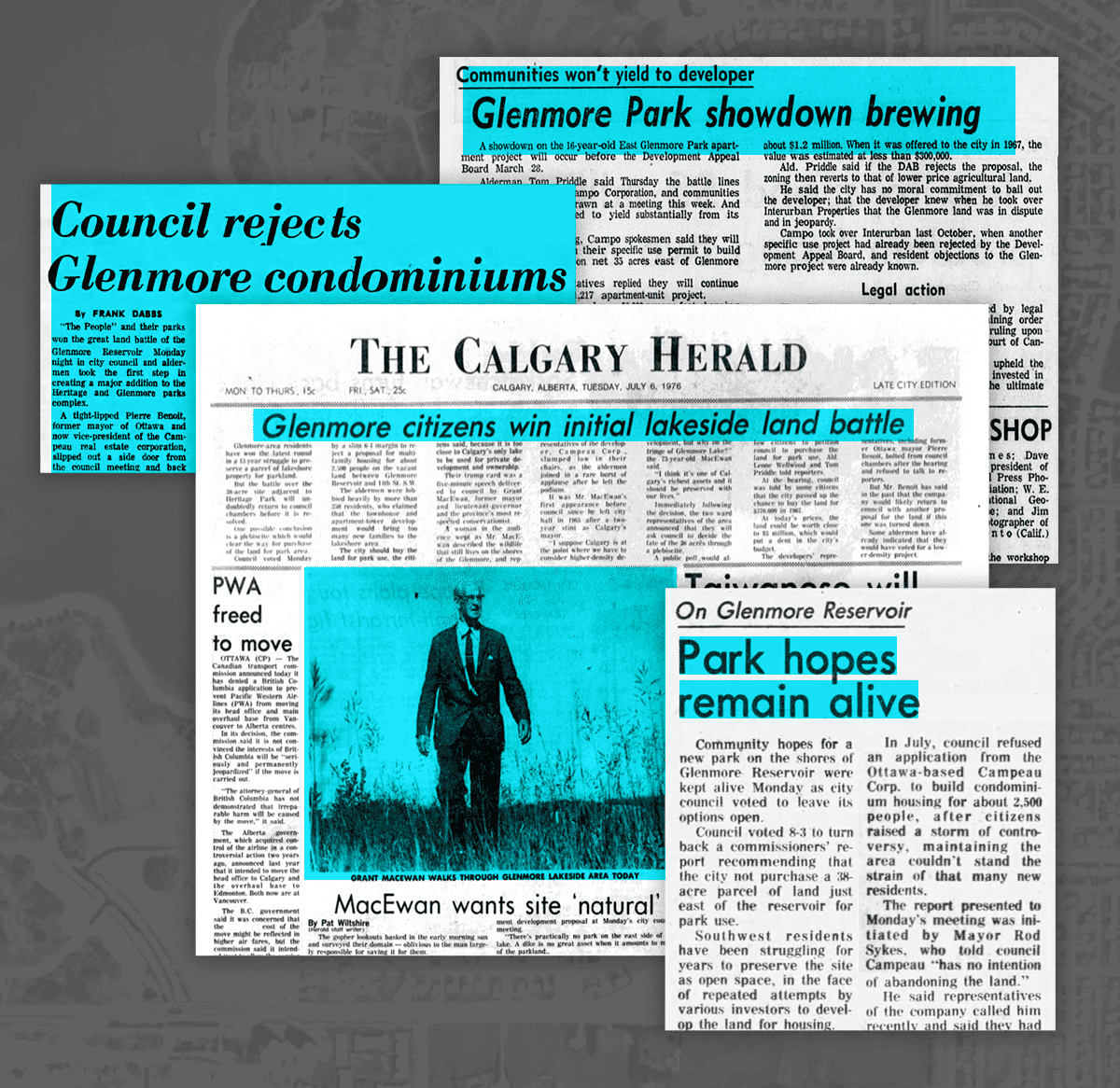
I am not opposed to development as long as it is in harmony with the present status of the area.
‘Gleaming glass and banner-blue roofs’: Glenmore Landing opens in 1985
By the late 1970s, Calgary was in the midst of a housing and construction boom as the city continued to sprawl.
ED WHALEN: It was at that point, in the early ’80s, I believe it was, that there were 36 construction cranes in the downtown area, indicating 36 huge buildings going up...
KLASZUS: This is Calgary broadcaster Ed Whalen in an old KSPS documentary about Calgary.
WHALEN: And the construction crane became known as the Calgary bird.
KLASZUS: After a land swap with the city involving the eastern shores of the Glenmore Reservoir and some land in Victoria Park, another developer finally succeeded where the others had not—by ditching the housing aspect and going purely commercial.
In 1985, Intrawest Properties opened the Glenmore Landing Shopping Centre on 10 acres at the southeast corner of the site, with five low-rise commercial buildings surrounding a big parking lot.

OLD GLENMORE LANDING TV AD: Glenmore Landing. The place to shop this Christmas!
OLD SAFEWAY TV AD: You feel it the moment you walk through the door. Familiar, yet new and exciting. It’s a one of a kind! Safeway Glenmore Landing. A bold, colourful look throughout...
KLASZUS: These days Glenmore Landing is showing its age. But when it opened, Glenmore Landing was marketed as a “magic lakeshore environment of gleaming glass and banner-blue roofs.” Even that was controversial in the area, with some locals protesting the colour scheme of the complex. They wanted “Calgary earth tones,” not blue, and took a petition of about 250 signatures to city hall.
“The colours are not us,” lamented one Bayview resident, according to the Herald. “They are not typical Calgary and we want to be typical Calgary.”
They got over it though, and Glenmore Landing, which originally had a nautical theme, became part of the neighbourhood fabric. RioCan bought it in 1987.
Meanwhile, after the land swap, the city finally owned the treed, low-lying lands south of Heritage Park and north of Glenmore Landing, along with the land surrounding the shopping centre. And for thirty years from 1985 to 2015, the threat of multifamily housing at this site was successfully staved off.

KLASZUS: But in 2015, the possibility of high-density housing here was raised once again.
BRIAN PINCOTT: We have a meeting of the stars, an alignment of planning that is happening around Glenmore Landing Shopping Centre.
KLASZUS: This is former city councillor Brian Pincott speaking at council in 2015.
PINCOTT: We have the Southwest BRT, which is in its planning stage this year and next year, lining up with the same time the owner of the Glenmore Landing shopping centre is doing planning of the shopping centre.
KLASZUS: The idea was to get these two projects going at the same time: a new bus-rapid transit route, which is called the MAX Yellow today, and transit-oriented development on the city-owned lands on the periphery of Glenmore Landing. This is former councillor Druh Farrell in 2015.
FARRELL: It’s a really exciting opportunity. This amazing location, underdeveloped...
KLASZUS: But by 2016, momentum had stalled.
HOWARD KAI (CITY PROJECT MANAGER): RioCan have advised the city that they are currently putting their plans on hold, given the current economic climate.
We have a meeting of the stars, an alignment of planning that is happening around Glenmore Landing Shopping Centre.

‘Awake to the threats’: Housing politics at the local community hall
When RioCan eventually put forward its new plans for a pedestrian-friendly urban village at Glenmore Landing in 2023, it was like the ‘60s and ‘70s all over again. RioCan wanted to build six high-rise towers, from 20 to 35 storeys, on the perimeter lands around Glenmore Landing—a project expected to take 15 years. The company’s longer-term plan was to eventually redevelop the original shopping centre with more towers and a high street.
The local community association didn’t view RioCan’s plans as an outright threat, at least not initially.
The community association here encompasses three different neighbourhoods: Bayview, Pump Hill, and Palliser. Pump Hill, a posh neighbourhood with some eye-poppingly large houses, is south of Glenmore Landing. Meanwhile incomes in Palliser, across the street from Bayview and west of Pump Hill, are lower than the citywide median income. In Palliser, most housing units are multifamily and 44% of people are renters.
This is partly because of the two high-rise towers of Glenmore Gardens on 90th Avenue, just blocks from Glenmore Landing. These were built in the late 1960s at the same time as Bayview.

KLASZUS: All this to say: the Palliser Bayview Pump Hill Community Association is a bit of a hodgepodge, with its three different communities. And now it was facing the age-old controversy over high-density development at the corner of 14th Street and 90th Avenue.
JAY NELSON: At the time, our position was to stay neutral.
KLASZUS: This is Jay Nelson. He’s lived in Palliser for about 20 years, and was the community association VP in 2023.
NELSON: We wanted to maintain a voice at the table with the developer and with the city and with our community. To try and understand what exactly was being proposed and, to the extent that we could, influence the proposals and the development to be the best development possible—but also be the best development for the community.
KLASZUS: The community association had numerous concerns, ranging from building height to traffic impacts. RioCan eventually scaled down the towers, with the tallest building downsized from 35 to 25 storeys.
Meanwhile, a group called Communities for the Preservation of Glenmore Landing was going door-to-door and organizing against the project. And the community association board was feeling some heat.
NELSON: They came to meet with us at our September 2023 board meeting. They presented their side of the story and the reasons why they were opposed, and they asked us to change our position from neutral to being opposed.
KLASZUS: A few months later, at a meeting in November, nine new members were elected to the board, including organizers of Communities for the Preservation of Glenmore Landing.
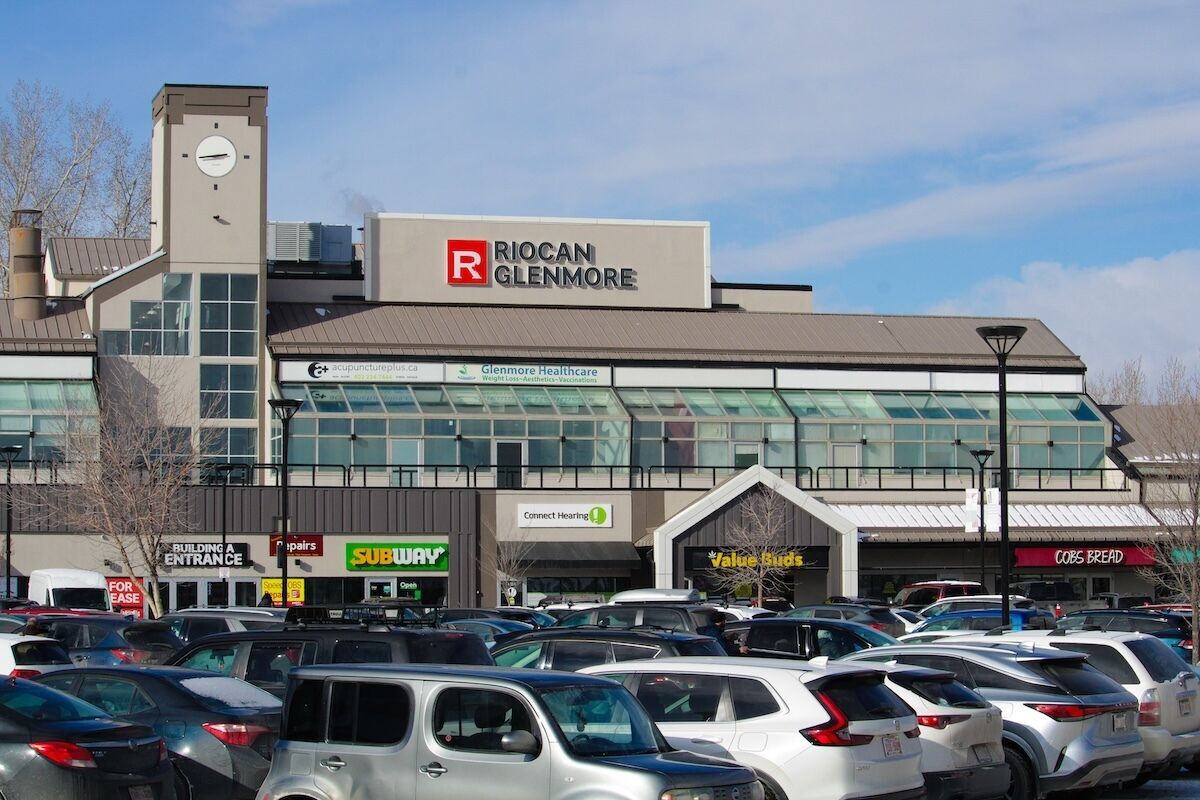
We wanted to maintain a voice at the table with the developer and with the city and with our community.
NELSON: And so the board basically turned over to being composed of people who were against the development. And then those of us who were wanting to be neutral could see the writing on the wall, so we all just resigned.
KLASZUS: In the December 2023 community newsletter, departing board members gave their reasons. “The board has become nearly entirely focused on the development of Glenmore Landing,” wrote outgoing president Sam Swain.
The community association’s maintenance director, Cal Melrose, who was 93 at the time, also resigned from what he described as a “one-issue board of directors.”
“As a renter myself, I am personally offended that, in this time of housing crisis where families (and seniors) are finding it difficult to find reasonable accommodations, our new board refuses to allow much-needed residential development in the city to ease the housing crisis and bring rents down.”
For his part, Jay Nelson wrote that the Glenmore Landing development had “taken the wind out of my sails. It is simply no fun to assess a situation objectively and in the best interests of the community while becoming an object of scorn to those who disagree. And as a volunteer no less!”
Our new board refuses to allow much-needed residential development in the city to ease the housing crisis and bring rents down.
NELSON: One of the things you find out in these sorts of situations is people don’t organize to be for development. It just doesn’t happen. People organize to be against development. So we, the board members, had conversations with our neighbours. It wasn’t adamantly against development; it was probably on the balance against development, but there were people who were interested in seeing what this development might bring to the community, and to see how the mall might improve.
I would say definitely once the talking points of the preservation society got out, people were more alarmed.
KLASZUS: In January of 2024, some of the new board members spoke at city council’s planning committee, outlining a host of concerns with RioCan’s high-rise project.
LESLEY FARRAR: Good afternoon council members. I am presenting from the PBPCA Community Association.
KLASZUS: This is Lesley Farrar, one of the new board members.
FARRAR: The proposed towers will shade 14th Street and the 14th Street pedestrian walkway. Shaded areas on roadways create problem areas for black ice. Black ice is a common culprit for some of the worst car accidents as vehicles spin out of control. RioCan’s own shadow studies indicate a large part of 14th Street will be shaded from 2 to 4 p.m. from September to March. This puts lives at risk during evening rush hour throughout our winter months.
KLASZUS: In the January 2024 community newsletter, the new president, Harris Hanson, wrote that the previous “perceived apathy” of the community association “inspired many of our neighbours to awake to the threats being posed by this proposed development, and to do something.”
Shaded areas on roadways create problem areas for black ice… This puts lives at risk during evening rush hour throughout our winter months.
I reached out to numerous Palliser Bayview Pump Hill Community Association board members for this story. Hanson answered my questions by email but told me board members aren’t doing interviews while this issue is before the courts—which we’ll get to.
By all accounts, there was a surge of interest in the community association as locals mobilized against the towers. Previously it had been a struggle to get people to care about community association projects. But after the election of the new board members and the resignation of the old ones, locals flocked to the 2024 AGM. “We had to keep bringing out row after row of more chairs and many people joined the community association that night,” Hanson told me.
In his January 2024 letter, Hanson described how the RioCan towers would affect locals. “During construction our community can anticipate high-volume construction noise from pile drivers, jackhammers and dump trucks,“ he wrote. Hanson also made it clear that the new board was well-equipped to fight the Glenmore Landing high-rises: “Members of our board are talented people with legal, engineering, building and development experience, who have served on other, larger boards.”
NELSON: There’s probably a number of people within our three communities that have retired and they have the time to organize. There tends to be a lot of professionals. There’s a lot of lawyers. There’s a lot of people who are involved in the development industry. So when they organize, I think they do a good job of it because they have some sense of what they need to do.
During construction our community can anticipate high-volume construction noise from pile drivers, jackhammers and dump trucks.
‘There isn’t the demand’: Residents fight southwest BRT in the 2010s
This part of Calgary has a long history of taking on city hall with well-organized, well-financed campaigns, going back to the 1960s but also in more recent decades.
Long before the ring road was completed, a local group called “A Better Way To Go” successfully fought the expansion of 14th Street as a key southwest traffic artery in the 1990s. The expansion would have expropriated homes in Eagle Ridge, a small neighbourhood just north of Heritage Park. Eagle Ridge was built in 1960 and is even more affluent than Bayview.
MAURICE TIMS: We just didn’t want an expressway, a Deerfoot going through a neighbourhood.
KLASZUS: This is Maurice Tims, a businessman and Eagle Ridge resident, speaking at council in 2016. Tims died in 2020, and his obituary noted that in his last decade he was a leading community activist in addition to being a board member of the local Rolls Royce owners club. Tims was a lifelong Rolls Royce aficionado.
And in 2016, when he was in his late 80s, Tims was campaigning against the new southwest BRT that goes by Glenmore Landing. He was chairman of a group called “Ready to Engage” that was vigorously opposing the project.
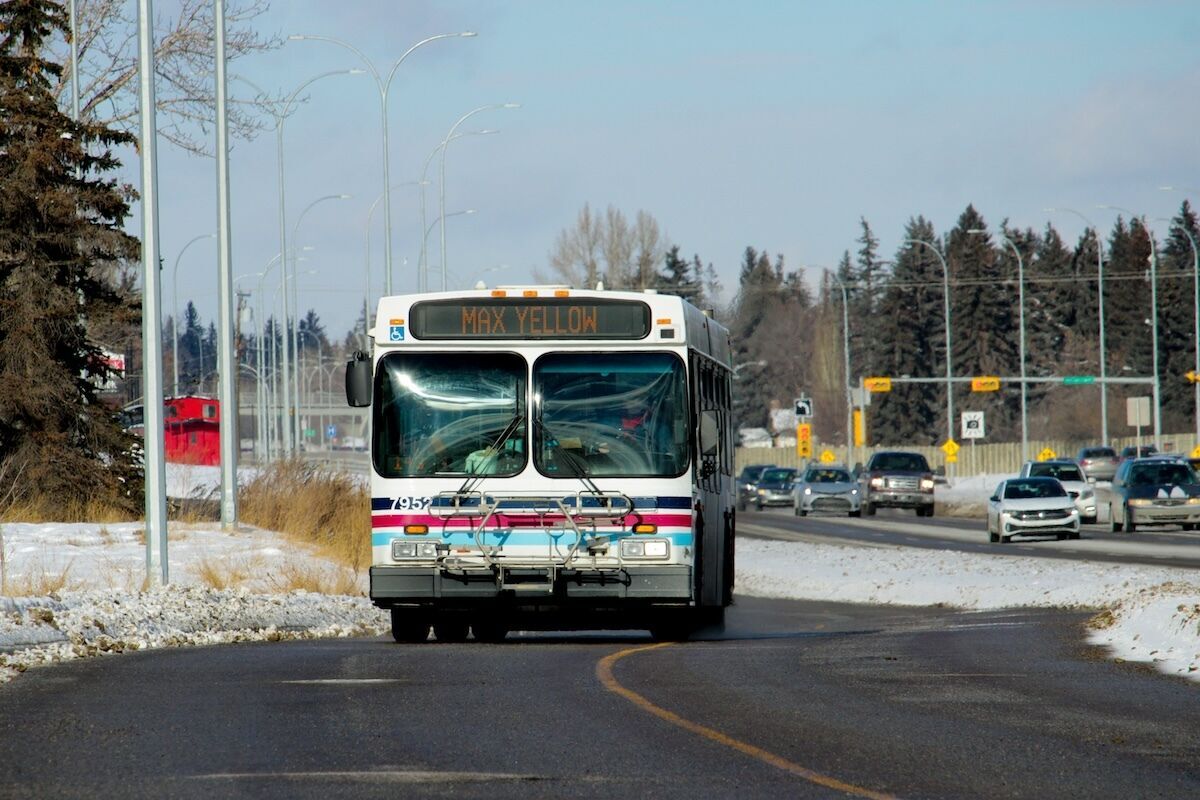
TIMS (2016): We hand-delivered over 40,000 information brochures throughout southwest Calgary... What we're saying is there isn’t the demand for this type of heavy-duty, high-capacity bus system on this route.
COUNCILLOR DRUH FARRELL (2016): It’s hard to identify demand when the service isn’t there.
KLASZUS: The city’s plan was to build a three-kilometre transitway along 14th Street from Southland Drive north to Glenmore Trail. Two separated lanes just for transit buses, with an underpass going under 90th Avenue by Glenmore Landing. And then the BRT would jog west to Mount Royal University before proceeding downtown. It was hugely controversial at the time, with residents registering their opposition at city hall.
ROHET SHARMA (2016): When somebody decides to buy a house in a neighbourhood, it is with a clear understanding of what that neighbourhood looks like. And it is not fair on the part of anybody to change that plan, to change that neighbourhood.
IRIS KIKKERT (2016): There are high-density communities within this city, and if people wish to live within them, live within them. The southwest BRT is completely unworkable in its present form.
KLASZUS: The 14th Street transitway’s cost had originally been pegged at $40 million. In 2016, the estimate jumped to $65 million. The transitway ultimately cost $75.9 million.
What we’re saying is there isn’t the demand for this type of heavy-duty, high-capacity bus system on this route.
And in 2016, city hall had rosy predictions of ridership.
CHRIS JORDAN, CALGARY TRANSIT (2016): We have determined for the southwest BRT route that by 2024 there will be approximately 12,500 per day using the service. This is higher than the top performing BRT route today, route 301, which carries approximately 8,500 riders per day.
KLASZUS: That was the prediction even when RioCan’s housing plans were on hold. Maurice Tims and his group argued that these numbers were not realistic. Nearly a decade later, how do city hall’s predictions hold up?
CITY ADMIN (2024): Currently, the MAX Yellow has 3,600 riders per day.
KLASZUS: That’s not even a third of what city hall predicted. Some residents call it the “ghost bus.” So what happened?
DAVID KOSIOR: MAX Yellow was launched in the end of December 2019, and it got a couple of months of service in there before the COVID pandemic hit.
KLASZUS: This is David Kosior, Calgary Transit’s senior planner for south Calgary. I asked him why the ridership numbers are so low compared to the predictions. Not slightly off, but way off.
KOSIOR: Well, I do think a big part of that is as soon as we launched it we did go into a pandemic. So transit citywide is still recovering from that in terms of ridership. But given the growth rates we’ve been seeing over the last few years, we do expect to be able to reach our ridership targets eventually in the future.
City hall expected 12,500 daily riders on the MAX Yellow by 2024. The actual ridership is 3,600 — not even a third of what city hall predicted.

KLASZUS: The MAX Yellow’s low ridership in this area was foretold by others in 2016, including this guy.
ANGRY RESIDENT: If you’re driving a Mercedes-Benz and you can afford a Mercedes-Benz, you’re not going to take public transit to goddamn downtown Calgary or Mount Royal College.
KLASZUS: This is from video that CBC recorded in 2016 at an acrimonious southwest BRT open house held by the city.
ANGRY RESIDENT: Take a look at the people that live west of 14th Street. Take a good hard look at them, and then tell me that those people are going to take public transit. My great aunt’s ass!
HOLLY HOYE: I think the affluence of the neighbourhoods around here is absolutely a factor.
KLASZUS: This is Holly Hoye, who has lived in Bayview for over 20 years.
HOYE: A lot of the people who are involved in the opposition to projects are from Pump Hill, Eagle Ridge, Kelvin Grove, Bayview. They own multimillion-dollar homes. They drive Audis and BMWs. They don’t take public transit. They don’t participate in that part of public life that a lot of Calgarians and new Calgarians do. I think they’re disconnected from those issues, and they for some reason can’t think beyond that.
They own multimillion-dollar homes. They drive Audis and BMWs. They don’t take public transit. They don’t participate in that part of public life.
‘Do not sell our parkland’: What makes a park a park?
And this brings us to the Glenmore Landing BRT station.
Or is it just a bus stop? That’s a matter of local debate around here. It’s an odd spot, with Glenmore Landing’s massive parking lot on one side and the traffic of 14 St. on the other, although there is a pedestrian bridge going from the station into Haysboro.
The high-density housing that was envisioned here for decades does not exist. And as a result, this is not a busy spot.

KOSIOR: At the Glenmore Landing station, we probably get about 200 trips on a typical day-to-day going to or from that location.
KLASZUS: This, of course, is part of the rationale for putting more housing here: transit-oriented development, or TOD, boosts transit ridership. And RioCan’s plans put the tallest towers by the station, rather than building on the existing shopping centre.
MELANIE HORKAN (CITY PLANNER): We want to put the most residents that we possibly can right next to the BRT station, obviously to allow them access to that facility that is obviously council-approved, and it’s been built. And we need to ensure that enough residents get to use that facility. So that’s why the main aim would be to concentrate residents as close to the station as possible.
KLASZUS: In January of 2024, city council’s infrastructure and planning committee held a public hearing about the sale of these city-owned surplus lands to RioCan. These are the five and a half acres that separate Glenmore Landing from the roads alongside. But there was a hitch.
SPENCER McCLURG (CITY REAL ESTATE MANAGER): An agreement registered on title to the privately owned adjacent shopping centre was brought to administration’s attention late last year, which refers to the city-owned lands as parkland, and goes further to say that the city undertakes to utilize the parklands only for park purposes, and a variety of other municipal purposes like roads and utilities.
KLASZUS: That 1983 agreement made the developer responsible for planting trees and building pathways, along with maintaining the grounds. And the city was prevented from obscuring Glenmore Landing with structures of any kind.
JONATHAN RYDER, RIOCAN LAWYER: The use of the term parkland was a coined phrase that was selected, but the rights that are set out in that agreement were largely for my client’s benefit. It was to protect Glenmore Landing Shopping Centre. What we have now is an opportunity to build non-market housing during a housing crisis adjacent to a TOD site.

KLASZUS: Opponents of RioCan’s plans argued that no development should proceed on these parcels because they are parkland, even if they weren’t zoned as a park. The city advertised the sale and got nearly 2,700 responses in opposition—and only six in support. Let’s listen in to the public hearing.
BRUCE WIGGERS: We should not even be considering the sale of parkland to a developer so that they can build luxury high-rises next to half of our city’s drinking water.
JULIA WOWKODAW: Once parkland is gone, it’s gone forever. Build where you’re not taking away green space. Macleod Trail. It’s by the LRT, there’re so many low buildings that could be redeveloped along Macleod Trail. Do not sell our parkland.
CAROLYN BROOKE: To me, it seems like terrible timing to be selling parklands after Calgary has just declared a climate emergency. We should be protecting these green spaces at all costs, and instead developing on vacant, already-developed lands.

KLASZUS: But not all parkland is equal.
HOLLY HOYE: The parkland—quote-unquote “parkland”—that they’re referring to are two grassy berms that border 14th Street and 90th Avenue. They’re not natural parkland. They have planted grass on them that gets mowed. They’re very sparsely populated with trees. They’re next to two busy roadways. I think it’s an incredible stretch to call that parkland.
We’re standing at the banks of the reservoir here, where there is true parkland, and there’s no comparison, in my mind. We have natural aspen here, we have saskatoon and other other species of plants here that grow naturally and that aren’t planted. So I think that was just a false argument that they’re using. They’re grasping on to issues that they think they can win on, but they’re not really grounded in reality.
I think there’s a gross hypocrisy in the same people who live in the houses behind you there on the reservoir, whose homes were built on true parkland 45 years ago—and they’re moaning about these green strips today.

KLASZUS: The BRT was also a hot topic at the public hearing about the sale.
SUSHMA MAHAJAN: This is going to be a high-end development, no doubt. Most residents will not be using public transport.
JULIA WOWKODAW: People buying or renting accommodation with million-dollar views will not be using transit, no matter how much the city would dearly wish an increase in ridership on our BRT ghost bus.
OLEH WOWKODAW: Residents of luxury condos, as proposed at Glenmore Landing redevelopment, will mostly never use the BRT. This will not be affordable housing. They will use their cars.
KLASZUS: Others, including Hoye, spoke in favour of the sale.
HOYE: I struggle to remember seeing any people using that area as parkland. No picnics, no frisbee, no one watching sunsets. Let’s be clear. Area residents opposing the sale of this under-utilized land are doing so because they fear the change that increased density may have. The parkland argument is a smokescreen for hyperlocal opposition.
HANITA SIMARD: This is not a park. This is a sidewalk intersecting strips of Kentucky bluegrass monocultures between the shops and the road. These bits of land are not big. They aren’t ecologically significant. Nor is it significant green space.
DOMINIC MESENCHUK: Many speakers have stated that they are in favour of densification and implementing affordable housing, yet they are against it in their own community. This is a textbook example of NIMBYism.
ROBERT TREMBLAY: It is ironic that many of the folks speaking about preserving parkland today have benefited from the environmental destruction that happened when their very low-density neighbourhoods were originally built. If the sale is not approved, more of that destruction will happen on the outskirts of our city.
KLASZUS: Council’s planning committee approved the sale, 8-3. But the pivotal decision on rezoning was still to come.

‘City of blue sky but no water’: A new argument in an old fight
A month later, in February of 2024, the Palliser Bayview Pump Hill Community Association took city hall to court over the issue. It applied for a judicial review of the sale, arguing there was a lack of procedural fairness and that city hall had withheld crucial information. Here’s what one opponent of the project told council in December.
JOHN TATLOW: Our surrounding communities have gone as far as engaging legal counsel to represent our views, and vow to continue with this mode. Money from hardworking Calgarians and retirees to make our views known. Yeah, it’s expensive.
KLASZUS: In December of 2024, with the next municipal election less than a year away, city hall held a public hearing on the Glenmore Landing rezoning. It stretched over two days. And RioCan and its consultants made their case.
MIKE COLDWELL: A litany of policy documents guide us towards development in this form, including the Municipal Development Plan, transportation plan, transit-oriented development policy guidelines, council’s strategic direction, and their Home is Here housing strategy.
KLASZUS: A big group of project opponents came to council wearing yellow shirts.
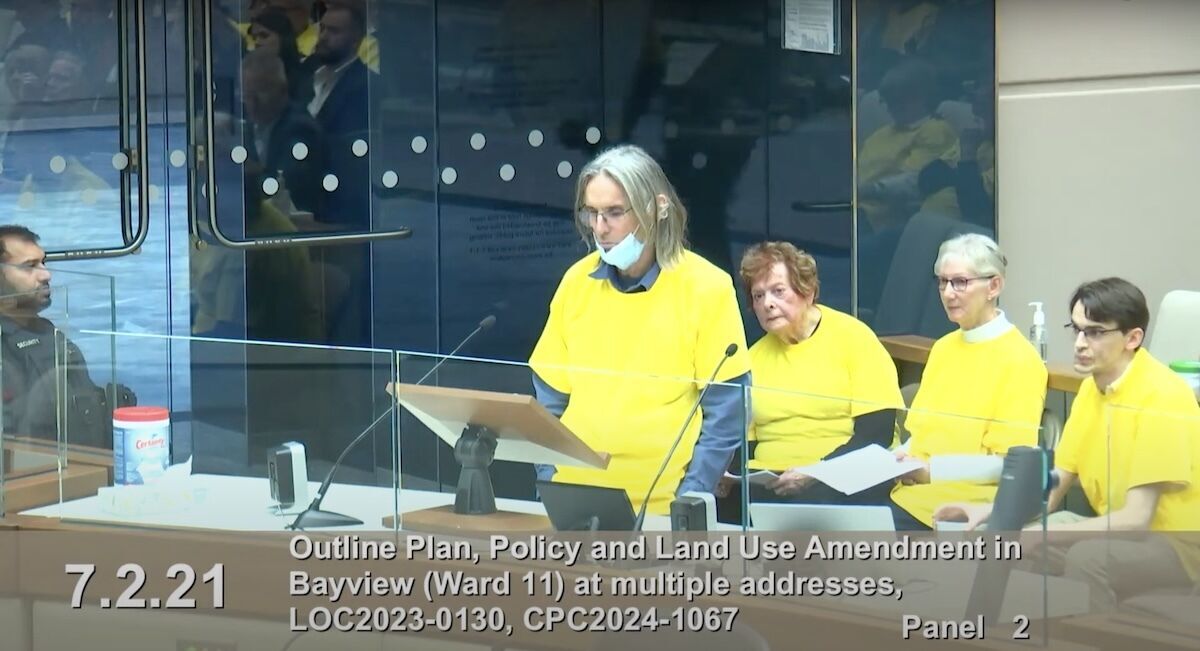
KEVIN TAYLOR: We did not want to wear red because red means stop. And we’re not about stopping. We’re about responsible development. If it was seven stories, I don't think you’d see an objection from us.
KLASZUS: As in the 1970s, opponents made every argument they could against the high-rises—noise, traffic, parking, you name it. They called for a Local Area Plan. But this round featured a new argument.
Previously, opposition to density in this location focused on impacts to nearby residents. But now the towers and their construction were portrayed as a threat to all Calgarians because of the proximity of the project to the Glenmore Reservoir, which supplies almost half of the city’s drinking water.
CAROL GORDON: I am with the Palliser Bayview Pump Hill Community Association. I am here to reaffirm our main objective. That is to protect Calgarians’ drinking water as supplied by the Glenmore Reservoir.
LESLIE LEVANT: The city’s most important resource is its water, drinking water, and this premier recreation area, the Glenmore Reservoir. Vote no.
KAREN ARNDT: What is the purpose of such aggressive development adjacent to our drinking water? Did we not learn anything this past summer, when we experienced failing infrastructure in Bowness and area, and the entire city relied on the Glenmore Reservoir? Just because you see a beautiful area, and have strategically put a bus stop in its vicinity, does not justify building such aggressive development.
JEFFREY WIGGERS: If council approves this development without considering the effects of water, Calgary’s new slogan will be known as a city of blue sky but no water. And this will be our legacy—the decision that we make today.
DAVID KRAYACICH: The presence of numerous dogs in such close proximity to the reservoir increases the likelihood of animal waste runoff during rain or snow melt events, further threatening water quality.
According to the Canadian Animal Health Institute, 41% of Canadian households at least have one dog. From just some simple math, this gets us 478 more dogs, and with the average amount of dog poop per dog, that’s 358 pounds of poop per day. These are just some simple stats that show how this area is not ready for this level of density yet.

What is the purpose of such aggressive development adjacent to our drinking water?
KLASZUS: City admin repeatedly said the city’s drinking water wasn’t a worry in relation to the project.
LAWRENCE WONG (CITY DEVELOPMENT ENGINEERING MANAGER): It is close, within proximity to the reservoir. But the thing is we are not directing any stormwater, any sewage, anything along that line, into the reservoir. All of that will be directed into the utility system. So from that regard, there is that source water protection that is occurring.
In terms of increased use to the park, there really isn’t that concern that water quality would be a concern. You have to remember that the water from the reservoir goes into our treatment plant, gets treated to a established standard, and we do testing to make sure that water quality is maintained through the treatment plant.
The work around the Bearspaw south feeder main in Bowness is unrelated and is not driven by growth or development. I just want to get that straight, because that was a recurring theme and a question that came up.
COUNCILLOR DAN McLEAN: Dog poop issue—anything to say about that?
CITY ADMIN: I don’t think there’s any specific concerns around that.
You have to remember that the water from the reservoir goes into our treatment plant.
KLASZUS: While most spoke in opposition to RioCan’s plans, some spoke in favour.
NOAH DAVIS: I’m not going to bother getting into any of the water or infrastructure concerns that have been addressed. I would hope that this council is intelligent enough to see past some of this hysteria.
STEPHANIE CHIPEUR: We need transit because a lot of people like myself can’t drive ourselves, and the disability community is full of people who are unable to drive. We need transit close to where we live. So that’s why this development is really exciting to me as a disabled person in Calgary.
WILLEM KLUMPENHOUWER: Council, here we are. This is what you asked for. Transit-oriented development. Many of you called for this exact thing. At the rezoning hearing, I listened to many Calgarians stand at that podium in city hall and ask: why not build development around transit instead? Well, this is it.
‘It’s irresponsible’ to proceed: Councillors echo residents’ water worries
KLASZUS: Now it was time for council to debate. Ward 11 Councillor Kourtney Penner opened.
COUNCILLOR PENNER: I have asked countless times about the impact to the reservoir and water quality. Our lead of water has not expressed any concerns. Those who are leading the Glenmore water treatment plant have not expressed any concerns.
I would hope that this council is intelligent enough to see past some of this hysteria.
COUNCILLOR JENNIFER WYNESS: I hear my colleagues’ points and how they were looking at this perspective from a small box piece of planning. But what we have to factor in is we are building and densifying around our water resource. Our water is something that we have to be very mindful and concerned about.
COUNCILLOR SONYA SHARP: I actually don’t have enough time to talk about water because it affected my community so much. So Councillor Wyness said exactly what I needed to say. It’s just—I think it’s irresponsible, considering everything we’ve endured this last summer.
COUNCILLOR ANDRE CHABOT: I think the proposed density is too much. I appreciate the fact that it was scaled back from what it was originally envisioned to. I think it’s still too much. I can’t support it.
COUNCILLOR RAJ DHALIWAL: I know this is hard. This is housing. But I think what we heard from residents for the last two days is they have concerns. So I urge RioCan to go back, get them engaged. Get the input, and maybe if you’re willing to do this in a phased approach, they are your partners.
What we have to factor in is we are building and densifying around our water resource.
COUNCILLOR DAN McLEAN: I think we should listen to the people on this one, and please don’t support this. Let’s say no to this and then maybe they can come back with something that’s more acceptable.
COUNCILLOR PETER DEMONG: Council, I think this time the community got it right. This is too much for the area as far as I’m concerned. Can it accept more density? Absolutely. And I think it should accept some more, but not before we need to look at the logistics of the area. The ingress, the egress just doesn’t work. If you haven’t been there, drive through it. It’s a chaotic location as it is now.
I’m not really agreeing with this even being a TOD. To me, it’s simply an extravagant bus stop. There should be more density, but not as it stands. I won’t be supporting this buildout.
KLASZUS: Here I should note that city admin says traffic is actually down at that intersection, thanks largely to Stoney Trail.
CITY ADMIN: The volumes on 90th Avenue and 14th Street, directly adjacent to the site, have dropped by 30% from 2014 to today.
To me, it’s simply an extravagant bus stop. There should be more density, but not as it stands. I won’t be supporting this buildout.
KLASZUS: Now let’s listen to council members who were for the project.
COUNCILLOR GIAN-CARLO CARRA: The fact that we have places like this, where the private sector is stepping up and taking a piece of auto dependent infrastructure, and creating a node of urbanism on a private on a primary transit network, is a best practice.
COUNCILLOR JASMINE MIAN: We really do have to get serious about finding places for people to live and doing it around existing infrastructure that we have.
I will raise some concerns, I think, with my colleagues leaning into fears of the community when we know that we have the right checks and balances in place to make sure that those things are taken care of. So leaning into anecdotes about the water. We know that the water main break that happened in Bowness was a catastrophic failure that didn't have anything to do with development.
COUNCILLOR KOURTNEY PENNER: I am deeply disappointed in my colleagues, because all of the answers to all of your debate were there.
I can tell you with assurance, Councillor Wyness, that I have met with the water services team around the Glenmore Reservoir. I can’t get snow clearing in the Weaselhead because we are so concerned about the water quality and about driving a Bobcat down there and the spill that our equipment might have. I can’t get an additional motorized boat on the reservoir to help with the disabled sailing association because we are so concerned about protecting our water. I can tell you this administration takes our water very seriously.
We can’t talk about an underutilized BRT and then not put people where it is.
We know that the water main break that happened in Bowness was a catastrophic failure that didn’t have anything to do with development.
KLASZUS: Finally it was time to vote.
MAYOR JYOTI GONDEK: The motion is defeated in a 6-8 vote with councillors Demong, McLean, Wyness, Dhaliwal, Wong, Chu, Sharp and Chabot voting against.
‘No longer moving forward’: The saga’s next chapter
And so, in 2024, Calgary city council voted down multifamily housing at Glenmore Landing, just like past councils did in 1963, 1967, 1976 and 1979.
RioCan wouldn’t comment for this story, except to say that the company “did not acquire the parcel of land in question” after council voted down the rezoning. The city also confirmed that “the proposed sale is no longer moving forward.”
It’s unclear what RioCan will do next. But if history is any guide, this isn’t over. There will be new high-rise plans here sooner or later, whether from RioCan or somebody else. Meanwhile, the community association’s application for a judicial review is still before the courts. A hearing is scheduled for January 2026.
We can’t talk about an underutilized BRT and then not put people where it is.

Sonja Johnson has been watching the recent saga unfold. She lives not far away, in Chinook Park. I spoke with her on the reservoir pathway by Glenmore Landing and Bayview. And something she said stayed with me after our conversation.
SONJA JOHNSON: I think of the reservoir. Some mornings I would come out here with my dog. I’d come early when it was cold, because my dog’s not great with people. I could go all the way to South Glenmore Park and run all the way back and never see a soul. And I would think: I am so lucky.
Everybody’s fearful of change, but that change happens. I used to do Jane’s Walks. I did a couple of Jane’s Walks for our community. And it was so interesting. Because the Chinook Park used to be the polo club. And before that, it was grassland and farmland and Indigenous land, and so—how far back, where do you decide what moment in time it stays fixed?
And you can’t, because change is inevitable. So I don’t know. I guess you just wish you could make people understand that and think: How lucky I’ve been to be here at this time, when I have that house, and I have the reservoir, and no one’s here. Like, I’ve been so lucky. But things change.
Jeremy Klaszus is founder and editor of The Sprawl. If you value in-depth Calgary stories like this one, please pitch in to support our work!
Support independent Calgary journalism!
Sign Me Up!The Sprawl connects Calgarians with their city through in-depth, curiosity-driven journalism. If you value independent local news, support our work so we can keep digging into municipal issues in the run-up to the 2025 civic election—and beyond!
15 Feb 2025 10:00:00
 The Sprawl Calgary
The Sprawl Calgary
Curious Calgary #16: Glenmore Landing
...More ...
Curious Calgary is a mini-comics series by Sam Hester that can be read online—and/or printed at home and folded into a zine! The entire comic fits onto a single page of 8 ½ by 11 paper. All you need is a printer.
Download this comic, print it out and follow these instructions for how to fold and cut it. A how-to video is at the bottom of this page.

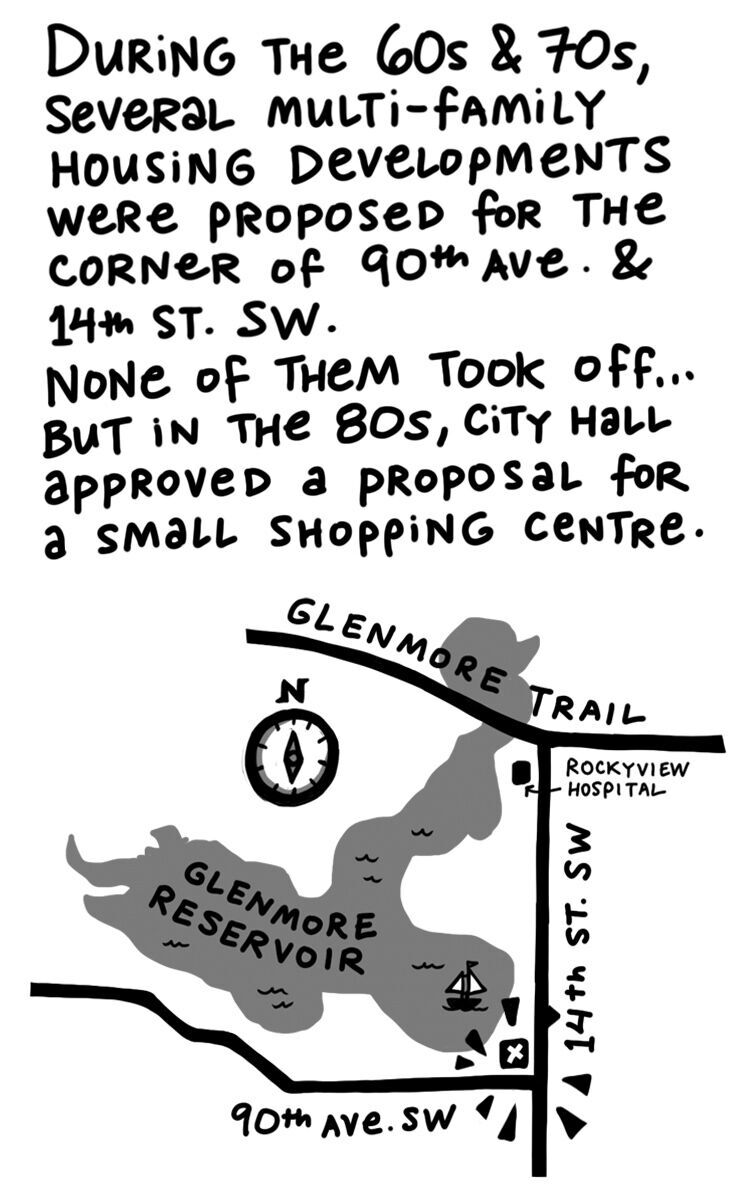

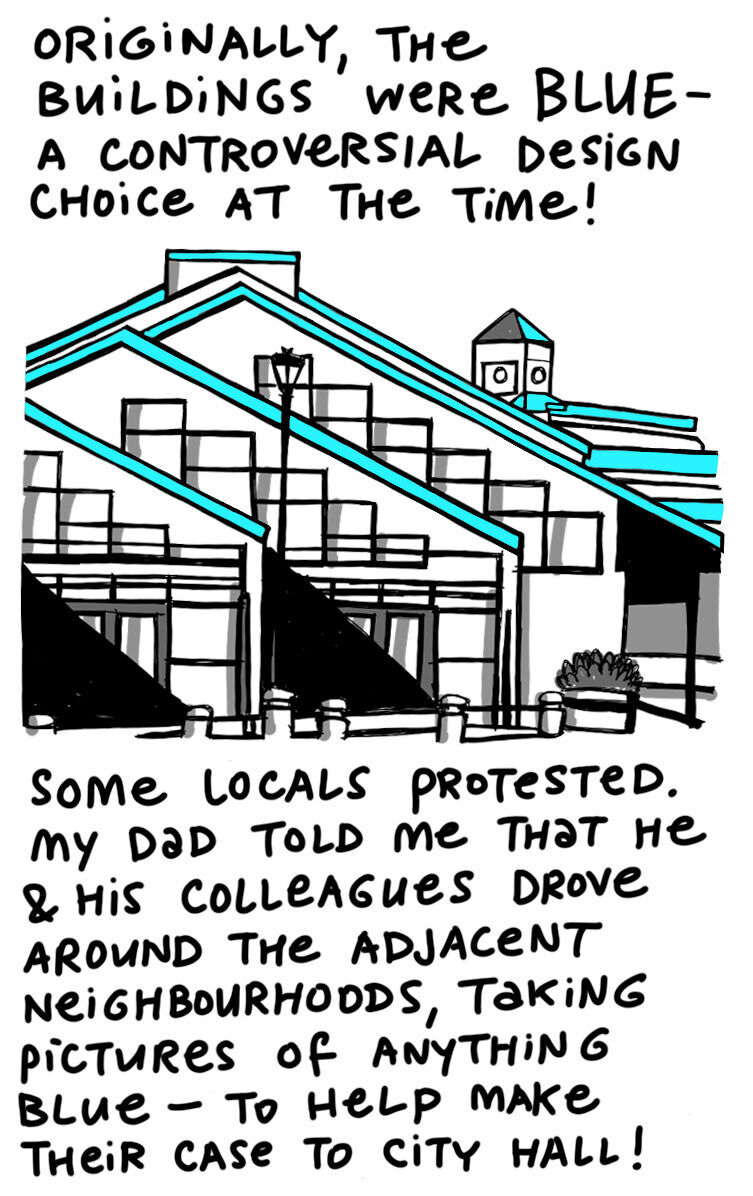



Sam Hester is a Calgary cartoonist, graphic recorder and longtime indie comics creator. Check out her Substack, The Drawing Book, for more of her autobiographical comics and stories!
Support independent Calgary journalism!
Sign Me Up!The Sprawl connects Calgarians with their city through in-depth, curiosity-driven journalism. If you value independent local news, support our work so we can keep digging into municipal issues in the run-up to the 2025 civic election—and beyond!
15 Feb 2025 07:30:00
 CBC Calgary
CBC Calgary
8 Canadian skiers qualify for finals of World Cup halfpipe event in Calgary
Canadian freestyle skier Cassie Sharpe will compete for her first World Cup victory in Calgary since 2019, while teammate Rachel Karker will try for an elusive gold medal at the site of the 1988 Winte ...More ...

Canadian freestyle skier Cassie Sharpe will compete for her first World Cup victory in Calgary since 2019, while teammate Rachel Karker will try for an elusive gold medal at the site of the 1988 Winter Games after advancing to the women's halfpipe final through qualifying Friday at WinSport in Calgary.
14 Feb 2025 23:50:20
 CBC Calgary
CBC Calgary
Courtney Walcott becomes third city council rookie to not seek re-election this fall
As city councillors contend with an increasingly negative and combative politics at the municipal level, more representatives are opting out of running for another term. ...More ...
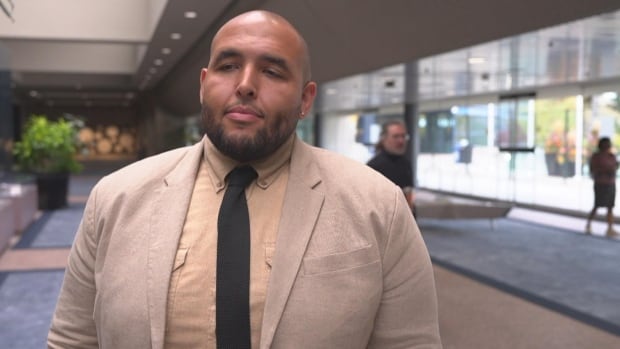
As city councillors contend with an increasingly negative and combative politics at the municipal level, more representatives are opting out of running for another term.
14 Feb 2025 23:21:38
 CBC Calgary
CBC Calgary
Alberta cabinet member urges Danielle Smith to remove health minister
Infrastructure Minister Peter Guthrie is urging that the premier remove Health Minister Adriana LaGrange from her post during investigations into AHS and allegations of her interference. ...More ...

Infrastructure Minister Peter Guthrie is urging that the premier remove Health Minister Adriana LaGrange from her post during investigations into AHS and allegations of her interference.
14 Feb 2025 20:14:38
 CBC Calgary
CBC Calgary
This Ontario flagmaker says Canadian flag sales have doubled amid U.S. tensions
Flags Unlimited's sales of Canadian flags have doubled from a year earlier, the company's owners said, as tensions with the United States fuel a wave of patriotism. ...More ...
Flags Unlimited's sales of Canadian flags have doubled from a year earlier, the company's owners said, as tensions with the United States fuel a wave of patriotism.
14 Feb 2025 17:21:14
 Taproot Edmonton
Taproot Edmonton
Major streets set to change to give buses priority
The city is set to install a dedicated bus lane along parts of 101 Street downtown, one of eight streets that will see changes to give buses priority over other vehicles. The bus lane is part of a sui ...More ...
The city is set to install a dedicated bus lane along parts of 101 Street downtown, one of eight streets that will see changes to give buses priority over other vehicles.
The bus lane is part of a suite of changes set to be installed across the city in 2025 and 2026 that are meant to improve operational efficiency and reduce travel times along major bus routes using a relatively small budget, a city report said. Council approved $7.1 million for the planning, design, and implementation of the transit priority measures in the 2023-2026 budget.
The city has planned changes along the following streets:
- Jasper Avenue (95 Street to 109 Street)
- 101 Street (Kingsway to Jasper Avenue)
- 97 Avenue (105 Street to 109 Street)
- 97 Street (107 Avenue to 118 Avenue)
- Hewes Way (23 Avenue to 28 Avenue)
- 118 Avenue at 80 Street
- Whyte Avenue (99 Street to 109 Street)
The city will adjust traffic signal phasing on each route so that buses can move through intersections more efficiently, a city spokesperson told Taproot. Other changes include queue jumps on 97 Avenue and Jasper Avenue, which will allow a bus to proceed before other traffic when a traffic light turns green; parking restrictions on 97 Street; and intersection modifications on Whyte Avenue, Jasper Avenue, and 97 Street. The city will extend sidewalks to make boarding and disembarking buses easier and to reduce pedestrian crossing distances at intersections. The entire list of changes is laid out in a council memo.
Daniel Witte, board chair of Edmonton Transit Riders, told Taproot that as Edmonton's population grows, it's important to improve the transit experience to encourage ridership.
"We don't want the 40 people in one bus to be stuck behind three or four cars, meaning they can't get through an intersection," Witte said. "This is about identifying spot locations that are in most need of congestion (relief) as our population grows, and addressing those with very effective and targeted remedies that make the transportation experience better for everyone."
Witte said that the city could have been more ambitious. "The fact that with the majority of these measures we're only seeing signal timing changes is a bit disappointing," Witte said. "I think that we, ideally, (would have) a lot more transit lanes and bus lanes implemented in the city in the places that we need them. Even things like queue jumps and transit priority signalling are so, so good and effective. It would be really great to see some more of those implemented."
City administration is currently planning bus rapid transit routes that will have dedicated bus lanes for at least 75% of the route. Two of the routes include parts of Whyte Avenue. The Old Strathcona Public Realm Strategy also calls for dedicated transit lanes on Whyte Avenue. As part of the transit priorities project, there will not be dedicated bus lanes installed on Whyte Avenue, the city said.
Witte said he had hoped the transit priority measures and the bus rapid transit routes on Whyte Avenue could be paired together. "If we can get those done simultaneously so we don't have to redo work and switch up the road five or six times — if we can only do it once or twice, I think everyone would prefer that."
14 Feb 2025 13:00:00
 Taproot Edmonton
Taproot Edmonton
A moment in history: Feb. 14, 1986
On this day in 1986, the story of one of Edmonton's oldest former garages was told. The two-storey Strathcona Garage, at 81 Avenue NW and 105 Street NW, has served many different uses over its 113 yea ...More ...
On this day in 1986, the story of one of Edmonton's oldest former garages was told.
The two-storey Strathcona Garage, at 81 Avenue NW and 105 Street NW, has served many different uses over its 113 years. When owner Otto Edinger had it built in 1912 for $40,000, he originally planned for it to be used as a hotel for the many travellers visiting Strathcona at the time. By the time the building opened, however, the upper floors were used for apartments and offices.
The ground floor of the building was designed as a car dealership with a small service department, and large windows designed to display the vehicles inside. At the time, cars were a luxury item that only the wealthy could afford (it had been less than a decade since they had started showing up on local streets). That quickly changed. Over the 1910s, the price of cars dropped to within reach of many middle-class Edmontonians. With prices falling and car ownership rising, the service part of the Strathcona Garage grew, and eventually replaced the dealership. Soon, the garage was one of Edmonton's busiest "motor hospitals."
Edinger didn't hold on to the garage for long, though. When it was built, Edmonton and Strathcona were in the middle of a real estate boom. But with the start of the First World War in 1914, Edmonton's economy cratered. Edinger was unable to make payments to the Riverdale brickyard that provided the materials for the building, and in 1919, he lost the garage to foreclosure. J.B. Little, the brickyard's owner, acquired it at auction.
The auto garage operated for more than 30 years after Little took over. It eventually shut down in 1943. The building's second floor continued as office space and apartments but was eventually condemned due to safety concerns. In 1973, the former garage traded brakes for steaks when it was leased to The Keg, which performed extensive renovations to the building.
The steakhouse operated for more than 40 years and closed in 2020. The next year, Alberta designated the Strathcona Garage as a historical resource because of the role it played in Alberta's automotive history.
Despite its long and varied history, the future of the garage remains uncertain. A few years ago, someone purchased it intending to restore its original function as a hotel. However, that plan fell through, and the building was sold for $3.6 million in a receivership sale last year, with little news about its next chapter.
This clipping was found on Vintage Edmonton, a daily look at Edmonton's history from armchair archivist @revRecluse of @VintageEdmonton.
14 Feb 2025 13:00:00
 CBC Calgary
CBC Calgary
Community of Braeside shaken by series of iPhone robberies — with 2 boys charged
The southwest community of Braeside has been shaken by a series of robberies that occurred during in-person meetings to buy and sell iPhones — with two boys accused of being at the helm. ...More ...
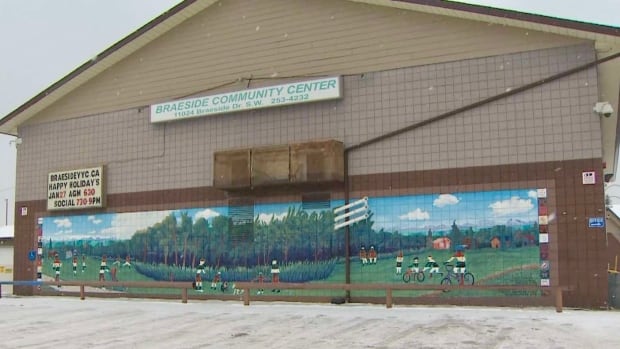
The southwest community of Braeside has been shaken by a series of robberies that occurred during in-person meetings to buy and sell iPhones — with two boys accused of being at the helm.
14 Feb 2025 12:00:00
 CBC Edmonton
CBC Edmonton
The U.S. is moving to expand school choice. Could it impact Canada?
Following through on earlier pledges, U.S. President Donald Trump has issued executive orders to expand school choice in America's K-12 school system. Here's what that means, and whether it can impact ...More ...

Following through on earlier pledges, U.S. President Donald Trump has issued executive orders to expand school choice in America's K-12 school system. Here's what that means, and whether it can impact Canadian schools.
14 Feb 2025 09:00:00
 CBC Edmonton
CBC Edmonton
At Issue: Premiers take tariff fight to Washington
At Issue this week: The premiers go to Washington to push back against tariffs, but was getting a meeting at the White House enough? How Trump’s threat of annexation is changing Canada’s politica ...More ...

At Issue this week: The premiers go to Washington to push back against tariffs, but was getting a meeting at the White House enough? How Trump’s threat of annexation is changing Canada’s political landscape. And political parties capitalize on a surge in Canadian patriotism.
14 Feb 2025 01:55:12
 CBC Edmonton
CBC Edmonton
Man charged with murder in stabbing Edmonton police deem intimate partner homicide
Police have charged a man with murder after a woman was found fatally stabbed in an Edmonton home. ...More ...

Police have charged a man with murder after a woman was found fatally stabbed in an Edmonton home.
14 Feb 2025 01:19:00
 CBC Calgary
CBC Calgary
Calgary teen who posted pro-ISIS, anti-LGBTQ content placed on terrorism peace bond
A Calgary teenager who posted pro-ISIS, anti-LGBTQ content to social media has been placed on a terrorism peace bond, bringing to an end the court cases stemming from a major RCMP national security in ...More ...
A Calgary teenager who posted pro-ISIS, anti-LGBTQ content to social media has been placed on a terrorism peace bond, bringing to an end the court cases stemming from a major RCMP national security investigation.
13 Feb 2025 23:39:09
 CBC Calgary
CBC Calgary
Former Alberta auditor general explains review process amid AHS probe
Merwan Saher, a former Alberta auditor general, says though the public may have a desire for instant information in a probe tied to Alberta Health Services, results of a promised review may still be ...More ...

Merwan Saher, a former Alberta auditor general, says though the public may have a desire for instant information in a probe tied to Alberta Health Services, results of a promised review may still be months away.
13 Feb 2025 21:43:47
 CBC Edmonton
CBC Edmonton
RCMP cleared in death of central Alberta man shot at home during mental health crisis
An RCMP officer who fatally shot a Red Deer, Alta., man who was experiencing a mental health crisis in the basement of his home has been cleared of wrongdoing in the death. ...More ...

An RCMP officer who fatally shot a Red Deer, Alta., man who was experiencing a mental health crisis in the basement of his home has been cleared of wrongdoing in the death.
13 Feb 2025 20:41:30
 CBC Edmonton
CBC Edmonton
Alberta strategy aims to fill gaps in midwifery care amid provincewide shortage
The provincial government has announced funding for a new midwifery strategy. The announcement comes as thousands of women in Alberta sit on a growing waitlist for care. ...More ...

The provincial government has announced funding for a new midwifery strategy. The announcement comes as thousands of women in Alberta sit on a growing waitlist for care.
13 Feb 2025 20:03:23
 Shootin’ The Breeze
Shootin’ The Breeze
Premier Smith pressed for answers on Grassy Mountain coal plans
In a strongly-worded letter to Premier Danielle Smith, Chris Spearman, spokesman for the Water for Food Group, outlines pressing concerns about the proposed Grass Mountain Coal Project and the broader ...More ...
In a strongly-worded letter to Premier Danielle Smith, Chris Spearman, spokesman for the Water for Food Group, outlines pressing concerns about the proposed Grass Mountain Coal Project and the broader implications of coal development in southwestern Alberta.
With water security, land use and economic priorities at stake, the letter challenges the government to provide clear answers on its coal strategy and ensure meaningful public consultation.
The letter outlines serious inconsistencies in government statements, a lack of public consultation and the potential environmental and economic risks associated with the project.
It raises eight key questions about government transparency, environmental protection, regulatory oversight and the economic trade-offs between short-term coal industry gains and the long-term sustainability of Alberta’s agrifood sector.
Below is the full letter, urging the premier to clarify her government’s position and commit to protecting the province’s land, water and long-term economic interests.
Dear Premier Smith,
Albertans expect transparency, accountability, and responsible stewardship of our natural resources. As stewards of the province’s coal reserves, your government has a duty to ensure that any decision made regarding coal mining protects our land, our water, our communities, and our long-term economic prosperity.
We are writing to seek immediate clarification on serious contradictions in your government’s statements regarding the Grassy Mountain Coal Project and the proposed Coal Industry Modernization Initiative (CIMI).
1. What Type of Mining Will Actually Take Place at Grassy Mountain?
Your government has issued contradictory statements about the mining method proposed for Grassy Mountain.
• On December 20, 2024, at a media conference, Energy Minister Brian Jean confirmed it would be an open-pit mine.
• On January 25, 2025, on your weekly radio show, you stated it would not be an open-pit mine.
Which statement is correct? If it is not open-pit mining, what specific method will be used?
The industry has floated buzzwords like “high wall mining” and “CIMI technology”, which appear to be little more than rebranded open-pit mining with the same risks of selenium contamination, windborne coal dust, and long-term land degradation.
If this mining method is truly different, why hasn’t Northback Resources been transparent about it? They have refused to answer public concerns for over eight months.
2. Can the Alberta Energy Regulator (AER) Be Trusted to Protect Our Water?
Your government has stated that AER monitoring will ensure environmental safety. However:
• Five Alberta government studies confirm that selenium contamination is inevitable from coal mining in this region.
• The Globe and Mail (January 6, 2025) reported that AER’s monitoring is understaffed, under-resourced, and ineffective.
• Alberta has no enforceable regulations for selenium pollution – only vague “guidelines” that fail to require meaningful action.
No conservative-minded government should tolerate a regulatory system that is both toothless and ineffective.
If AER cannot stop contamination before it happens, how can we trust it to clean up the mess afterward?
3. Why Are Albertans Being Excluded from Coal Policy Consultations?
Your government has made it clear that consultations on Alberta’s new coal policy will be limited to coal companies.
• Why are farmers, ranchers, municipalities, and Indigenous communities being excluded?
• Why are foreign-owned coal companies being prioritized over the Albertans who own these resources?
Historically, over 70 percent of Albertans have opposed coal mining in the Rockies. Albertans have fought this battle before – and won.
If this project is truly in Alberta’s best interest, why avoid consulting the people most affected by it?
4. Why Is Grassy Mountain Being Treated as an “Advanced Project” When It Was Rejected?
Grassy Mountain was already rejected in June 2021 by a joint federal-provincial review panel because its risks outweighed its benefits.
Northback Resources then challenged the ruling in court three times – and lost every time.
Despite this, Minister Jean now falsely claims that Grassy Mountain is an “advanced project”.
The reality:
• The Alberta government still lists the project as “terminated”
• Northback itself has publicly stated that the project is cancelled.
How is a project that was rejected, lost in court, and declared terminated now considered “advanced”?
This undermines the rule of law and due process—principles that conservatives should stand for.
5. Why Is Your Government Opening All of the Eastern Slopes to Coal Mining?
Your government claims this decision avoids legal action from coal companies.
Yet Alberta law already provides the legal power to block coal mining in the public interest under the Mines and Minerals Act (Section 8).
Why, then, is your government choosing to sacrifice Alberta’s Eastern Slopes rather than stand up to foreign coal companies?
6. The Business Case for Grassy Mountain Doesn’t Hold Up
The proposed mine would create only 400 jobs for just 23-25 years, but at the expense of a $multi-billion agrifood industry that supports over 200,000 Albertans in the Oldman River Basin.
This is not a trade-off Albertans can afford.
7. Where Will the Water Come From?
Southern Alberta already faces chronic drought and strict water allocations. Coal mines require massive amounts of water, yet:
• Your government has not explained how much water will be diverted from agricultural use.
• Once contaminated, selenium cannot be removed from drinking water with current technology.
Can you confirm where Grassy Mountain will source its water, and how much will be taken from Alberta farmers and municipalities?
8. What Mandate Do You Have to Reintroduce Coal Mining?
In 2019, the UCP did not campaign on opening the Rockies to coal mining. When they attempted to do so, Albertans rejected it overwhelmingly.
Now, in 2025, you are again moving forward without a mandate from the people. If coal mining is truly a priority for your government, then:
• Take it to an election.
• Let Albertans decide.
Conclusion
Premier Smith, the Grassy Mountain Coal Project, and coal mining in the Alberta Rockies are the wrong decisions for Alberta.
This is not a right vs. left issue.
This is a right vs. wrong issue.
Your government is making decisions against public will, against scientific evidence, and against Alberta’s long-term interests, for the short-term gain of foreign coal companies.
We demand clear, public answers to these concerns. Albertans deserve to know:
• What mining method will be used at Grassy Mountain?
• How will AER enforce protections with no real regulations?
• Why are foreign coal companies being prioritized over Albertans?
• Why is your government overriding past legal decisions?
• Where will the water come from?
• Will you take this decision to an election?
Until these questions are answered: Grassy Mountain must not proceed.
Sincerely,
Chris Spearman
Spokesperson, Water for Food Group
The post Premier Smith pressed for answers on Grassy Mountain coal plans appeared first on Shootin' the Breeze.
13 Feb 2025 19:18:08
 CBC Edmonton
CBC Edmonton
Burned Jasper shops looking to rebound with new 'business village'
Businesses destroyed in Jasper’s major wildfire are hoping a new town-approved idea to boost the local economy can help them weather tough times. The CBC’s Acton Clarkin has the details. ...More ...

Businesses destroyed in Jasper’s major wildfire are hoping a new town-approved idea to boost the local economy can help them weather tough times. The CBC’s Acton Clarkin has the details.
6 months ago
 CBC Edmonton
CBC Edmonton
Prairies Economic Development minister meets business leaders in Edmonton amid tariff threat
Minister of Sport and Minister responsible for Prairies Economic Development Canada, Terry Duguid, held a roundtable with industry leaders on impacts of potential U.S. tariffs on Alberta's constructio ...More ...
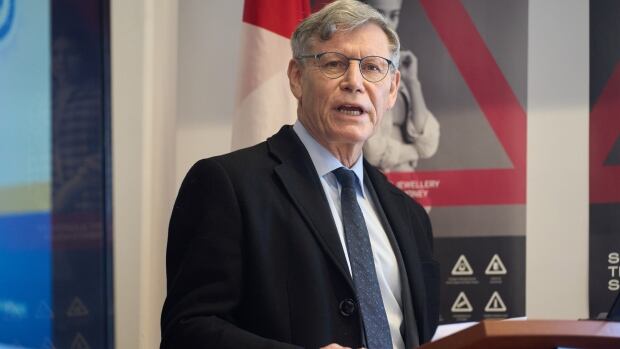
Minister of Sport and Minister responsible for Prairies Economic Development Canada, Terry Duguid, held a roundtable with industry leaders on impacts of potential U.S. tariffs on Alberta's construction and manufacturing sectors.
6 months ago
 CBC Edmonton
CBC Edmonton
Red Earth Creek, Alta., family mourns mother, daughter killed in head-on collision
A grieving family in northwestern Alberta is asking witnesses to contact RCMP to help in the investigation of a head-on highway collision that killed a mother and daughter. ...More ...
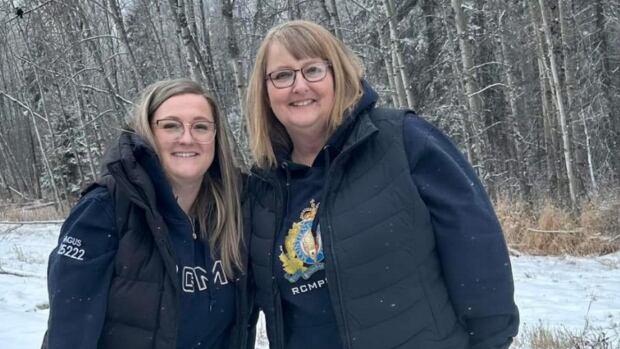
A grieving family in northwestern Alberta is asking witnesses to contact RCMP to help in the investigation of a head-on highway collision that killed a mother and daughter.
6 months ago
 CBC Edmonton
CBC Edmonton
Work continues to reclaim Alberta land affected by 2024 fireguards
Fireguards, a common fire suppression technique, are strategically placed barriers that aim to stop — or at least hinder — wildfire from spreading. Often, heavy equipment is used to remove vegetat ...More ...

Fireguards, a common fire suppression technique, are strategically placed barriers that aim to stop — or at least hinder — wildfire from spreading. Often, heavy equipment is used to remove vegetation that could fuel the flames, leaving only soil.
6 months ago
 Taproot Edmonton
Taproot Edmonton
Students challenged to create solution for millions of used oil containers
The Alberta Recycling Management Authority is in the midst of a new event that challenges students at the University of Alberta to find better ways to deal with used plastic oil containers. Last year, ...More ...
The Alberta Recycling Management Authority is in the midst of a new event that challenges students at the University of Alberta to find better ways to deal with used plastic oil containers.
Last year, Albertans purchased 90.3 million litres of oil within 2.31 million kilograms of containers, as well as 4.48 million kilograms of oil filters. While processes exist to recycle the waste this demand creates, the sheer volume calls for even more solutions, the authority said.
"Used oil containers have challenges," Michael Robertson, the authority's program manager, told Taproot. "Innovations that improve the efficiency or expand the end markets could help create more stable demand that would help support a sustainable program that, ultimately, attracts and retains businesses."
The Student Innovation Challenge: Used Oil Plastics, which kicked off on Jan. 17 and runs until March, calls for engineering students at the graduate and undergraduate levels to team up and conceptualize improvements to any part of the life cycle of the containers that hold motor oils or other lubricants.
"This is theoretical, most likely, for a lot of this work," Robertson said. "To the best of (the students') ability, they're trying to estimate what these (innovations) might be for the real-world application."
The authority decided to work with the university because of the school's knowledge in working with resins like plastic, Robertson said.
The Government of Alberta created the recycling authority in 1997 to oversee recycling for materials that don't go to bottle depots or municipal recycling facilities. The organization's responsibilities include used tires, electronics, paints, and oils, including oil containers. In the 2023 to 2024 reporting period, the authority recovered about 96% of plastic oil containers sold in Alberta at depots and partner organizations. These plastics are usually turned into either pellets or scraps for new products, like plastic jugs that hold oil, but also can be used in composite products like fence posts.
The authority works with 14 different businesses to process used plastics that contained oil, including Aevitas in Edmonton and RPM eco in Spruce Grove. Robertson said these plastics are "less desirable" for businesses that recycle plastics because oil needs to be cleaned from them for certain processes, and because they have narrower applications than other used plastics.
Finding more ways to repurpose these materials is good for business, he said. Roughly 40 students across eight teams in the challenge are already working to do just that. One nascent idea is to use 3D printing somewhere in the life cycle of these plastics.
"The students have an incredible range of solutions that they've been talking about," Kieran Ramnarine, the experiential learning coordinator in the university's faculty of engineering, told Taproot. "We wanted to leave the board open for them to come up with whatever it could be. Maybe at the market disruption (stage) from the start of the value chain, maybe it's something about a process somewhere along the way, maybe it's an end product or a later-in-life product."
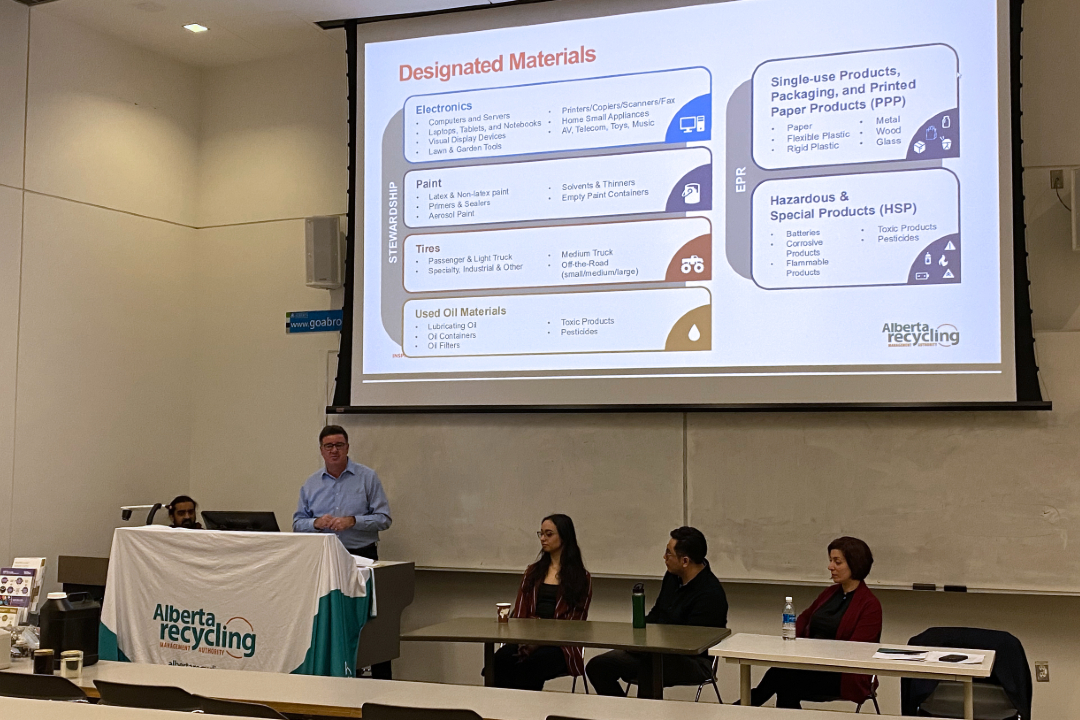
The University of Alberta's Kieran Ramnarine (left) is coordinating a challenge for students from the Alberta Recycling Management Authority (CEO Ed Gugenheimer stands next to Ramnarine) to find new ways to recycle, reuse, or improve plastics that contained oil. The team that places first will win $3,000. (Supplied)
Beyond solutions for used plastics that contained oil, the challenge is a way for students to learn management skills within teams, and to advance their thinking on circularity.
Circularity is the idea that one should think of a product through its entire life cycle, including after it is used, Ramnarine said. "Thinking about process, thinking about the design, and thinking about the whole cycle of the material, I think was an important part of the competition."
Outside of the competition, on April 1, the recycling authority will permanently expand its electronics recycling program after piloting the idea since 2020. Once this happens, power tools, microwaves, musical instruments, and more products will be recyclable through the authority. Further expansion of the used electronics program includes materials used in renewable energy such as solar panels, electric vehicle batteries, and wind turbine components. The authority's website says Alberta will be the first province in Canada to offer recycling for the components of renewable energy products.
"One of the offshoots that we've been working on is identifying and validating (solar) panels that are still good enough to be reused," Robertson said. "What does that look like, and how we can bring those back into the market to be used again?"
Elsewhere in Alberta recycling, the Alberta Beverage Container Recycling Corporation is working with NAIT's Applied Research division to improve recycling outcomes for beverage pouches, like the ones that hold Capri Sun.
Back to the U of A innovation challenge for plastics that contained oils, in March, representatives from the authority and the university will judge the student teams on their solution's innovation, market value and proposition, timelines, and budget. Winning teams will receive prizes of $3,000, $2,000, and $1,000 for first, second, and third place, respectively.
6 months ago
 Taproot Edmonton
Taproot Edmonton
Calls for public engagement: Development plan, satisfaction with services, Vision Zero
Here are opportunities to inform municipal decision-making about traffic safety, development, and more. Please only answer surveys from the municipality where you live. 2024 Public Satisfaction Surve ...More ...
Here are opportunities to inform municipal decision-making about traffic safety, development, and more. Please only answer surveys from the municipality where you live.
- 2024 Public Satisfaction Survey — Strathcona County is running its annual public satisfaction survey to gather feedback about county programs and services. Residents can complete the survey until Feb. 14.
- Municipal Development Plan — The Town of Morinville has entered the third phase of public engagement for a new Municipal Development Plan. Residents are invited to provide feedback on draft content and deliverables by completing a survey before Feb. 21.
- Vision Zero Street Labs — The City of Edmonton seeks feedback on recently installed traffic safety and calming measures in Allard, Idlewylde, and Ritchie until Feb. 18. Feedback on recently installed measures in Mayfield, Parkview, and Wellington will be accepted until Feb. 25.
More input opportunities
- Until Feb. 21: Towards 40: McConachie (City of Edmonton)
- Until Feb. 21: Grandin Renaming (City of St. Albert)
- Until Feb. 28: Policing Priorities Survey (City of St. Albert)
- Until March 28: Engage and Play: Shaping Public Recreation (City of Edmonton)
- Until April 15: Passenger Rail Master Plan Survey (Government of Alberta)
6 months ago
 CBC Calgary
CBC Calgary
Calls grow for extended urgent care hours in rapidly growing town of Cochrane
As Cochrane’s population balloons, a recently formed health foundation and two grieving parents are pushing for extended hours at the local urgent care centre — with the goal of eventually having ...More ...

As Cochrane’s population balloons, a recently formed health foundation and two grieving parents are pushing for extended hours at the local urgent care centre — with the goal of eventually having it open 24/7.
6 months ago
 CBC Calgary
CBC Calgary
Chronic wasting disease has exploded through Alberta's deer population. Can it be stopped?
Researchers are now racing to come up with strategies to at least slow the spread of the disease in deer and reduce the chances of it spreading to more vulnerable caribou populations — or, worse, h ...More ...

Researchers are now racing to come up with strategies to at least slow the spread of the disease in deer and reduce the chances of it spreading to more vulnerable caribou populations — or, worse, humans.
6 months ago
 CBC Edmonton
CBC Edmonton
Gigatonnes of carbon are stored in under-protected areas
A new study finds only 17 per cent of the world’s peatlands are in protected areas, a vast under-protection considering how critical they are to carbon storage, biodiversity and water regulation. Bu ...More ...

A new study finds only 17 per cent of the world’s peatlands are in protected areas, a vast under-protection considering how critical they are to carbon storage, biodiversity and water regulation. But it also highlights gaps in data about this vital ecosystem.
6 months ago
 CBC Calgary
CBC Calgary
Italy's Brignone wins giant slalom world title, Canmore's Richardson 10th
Federica Brignone won the giant slalom event at the alpine skiing world championships in Saalbach-Hinterglemm, Austria, on Thursday. Britt Richardson, of Canmore, Alta., was the top Canadian finisher, ...More ...

Federica Brignone won the giant slalom event at the alpine skiing world championships in Saalbach-Hinterglemm, Austria, on Thursday. Britt Richardson, of Canmore, Alta., was the top Canadian finisher, claiming a 10th-place result.
6 months ago
 CBC Calgary
CBC Calgary
Child taken to hospital after being bit by police dog in southeast Calgary
A young girl was taken to hospital on Wednesday after being bit by a Calgary police service dog. Police say the Alberta Serious Incident Response Team is investigating the incident. ...More ...

A young girl was taken to hospital on Wednesday after being bit by a Calgary police service dog. Police say the Alberta Serious Incident Response Team is investigating the incident.
6 months ago
 CBC Calgary
CBC Calgary
Calgary considering micro-tunnelling option to make water feeder main more reliable
After a local state of emergency and water restrictions last summer due to the Bearspaw south feeder main rupture, city councillors discussed an option this week to make the pipe more reliable. ...More ...

After a local state of emergency and water restrictions last summer due to the Bearspaw south feeder main rupture, city councillors discussed an option this week to make the pipe more reliable.
6 months ago
 CBC Calgary
CBC Calgary
Former AHS CEO alleges wrongful dismissal in $1.7M lawsuit against province
The former CEO of Alberta Health Services has filed a wrongful dismissal lawsuit against AHS and the province, claiming she was fired because she’d launched an investigation and forensic audit into ...More ...

The former CEO of Alberta Health Services has filed a wrongful dismissal lawsuit against AHS and the province, claiming she was fired because she’d launched an investigation and forensic audit into various contracts and deals with private surgical companies.
6 months ago
 CBC Calgary
CBC Calgary
Canmore man who fired at officer testifies he has no memory of incident
A Canmore man who was badly injured by return fire after he shot twice at an RCMP officer testified he has no memory of the incident. ...More ...
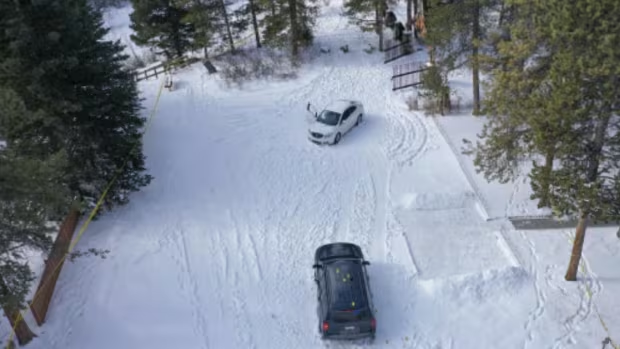
A Canmore man who was badly injured by return fire after he shot twice at an RCMP officer testified he has no memory of the incident.
6 months ago
 Shootin’ The Breeze
Shootin’ The Breeze
Long weekends ahead? LRSD weighs four-day school week
A four-day school week could become reality for students in the Livingstone Range School Division. As trustees weigh the potential benefits and challenges, a newly released report outlines how the cha ...More ...
A four-day school week could become reality for students in the Livingstone Range School Division. As trustees weigh the potential benefits and challenges, a newly released report outlines how the change could impact student success, finances and the wider community.
LRSD hopes a Monday-to-Thursday schedule will enhance student success, reduce costs and improve staff retention and recruitment. Anticipated benefits are mental and wellness improvements, opportunities for innovation and consistency across the division.
The report, presented to the board Jan. 28, compiles input from parents, students, staff, union executives, Indigenous education partners, Hutterite colonies and child-care providers, as well as budget projections from LRSD’s financial department, and research and insights from senior administration.
Between April and November of 2024, information was shared and feedback gathered through letters, digital communications, in-person conversations, focus groups, staff meetings, surveys and email responses.
Proposed schedule changes
The proposed four-day school week would follow a Monday-to-Thursday schedule, with extended daily hours to meet Alberta’s minimum instructional requirement.
Holiday Mondays would be observed as usual, with classes running Tuesday to Friday on affected weeks.
This change would affect local students of Canyon School and Matthew Halton High School in Pincher Creek; Livingstone School in Lundbreck; Horace Allen School, Isabelle Sellon School, Crowsnest Consolidated High School in Crowsnest Pass; and schools in the Pincher Creek, Livingstone, Spring Point, Thompson and Waterton Hutterite colonies.
The division also includes schools in Fort Macleod, Ewelme Colony, Greenwood Colony, Jumbo Valley Colony, Daly Creek Colony, Granum, Willow Creek Colony, Claresholm, Clear Lake Colony, Stavely, Parkland Colony, Little Bow Colony and Nanton.
Student success: hopes and concerns
Staff responses show hope for improved attendance, enhanced engagement and focus, improved student well-being, and allowance for extracurriculars, work and family time.
Supporters feel a consistent three-day weekend would help students be well rested, more focused and less prone to burnout.
However, concerns include exhaustion for younger children, retention issues and challenges for students needing extra support.
Teachers also worry that students struggling with self-paced learning may find it harder to stay on track, possibly affecting standardized test scores and long-term academic performance.
Students expressed mixed opinions — some welcomed the idea of fewer school days, longer weekends and more availability for part-time jobs, while others feared falling behind without the structure of a five-day routine.
Twenty-five Livingstone Leaders and 10 other students were split evenly in favour of and in opposition to the four-day school week.
Students believe an extra day off could improve mental health and time-management skills by allowing for rest, studying, hobbies or work. The opportunity to explore personal interests is appealing.
There is worry, though, that shorter lunches and breaks, a heavier course load, more homework and less one-on-one support from teachers could generate additional stress and negatively impact academic performance.
These students shared empathy for families requiring child care and others with diverse needs, and hope students can find ways to enhance personal and academic growth.
To address concerns, the report suggests study-support programs, after-school tutoring and online learning resources.
Special considerations for Indigenous students include literacy and numeracy development, food security, home support for learning, safety and well-being, transportation and access to extracurricular activities.
Financial impact and budget considerations
A four-day schedule could save $556,100 annually, or one per cent of LRSD’s total budget. This includes projected savings of $513,000 in staffing, $42,000 in utilities and supplies, and $1,100 in transportation.
Although transportation-related savings were initially projected at $102,600, an additional route and contractual obligations to bus St. Michael’s students reduce net savings to about $1,100.
In Pincher Creek, LRSD provides bus services for both its own students and those attending St. Michael’s School through an agreement with Holy Spirit Catholic School Division.
Under the four-day model, LRSD would still be required to transport St. Michael’s students on Fridays, costing about $48,300 annually.
Board vice-chairwoman Lacey Poytress questioned why Holy Spirit School Division is not responsible for covering this cost.
Jeff Perry, associate superintendent of business services, explained that LRSD applies for funding on behalf of both divisions and receives a transportation grant that includes St. Michael’s students. It is based on a per-student funding model, not the number of school days.
“Additionally, there is a portion of the grant that supports co-operative transportation agreements between jurisdictions. If we didn’t transport St. Mike’s students, we wouldn’t receive that portion of the funding,” he said.
A change in LRSD student numbers could also affect provincial funding.
If LRSD moves to the four-day model, family preferences may lead to enrolment shifts, particularly in Pincher Creek, where St. Michael’s School follows a five-day schedule and may attract students from Canyon Elementary School and Matthew Halton High School.
However, the report also suggests some families may transfer their children from St. Michael’s to LRSD schools to align with the four-day schedule.
Hutterite colony leaders and parents unanimously oppose the change and have requested an exemption in respect of the unique needs of their communities.
There is a risk that about 250 Hutterite students could shift to a congregated home model, leaving LRSD and affecting both staffing and funding.
Impact on families and communities
Any shift in scheduling could have direct implications for local families, requiring adjustments to child care, extracurricular activities and daily routines.
Pincher Creek, Crowsnest Pass and Lundbreck stakeholders share some concerns, particularly regarding child-care availability.
A November 2024 survey revealed that while more than one-third of responding families do not require child care, those who do often rely on family, friends or altered work schedules due to limited access to licensed child-care providers.
Many parents prefer licensed childc are, but provincial subsidies do not typically apply to school-age children, making affordability a challenge.
Some families welcome the flexibility of a four-day schedule while others worry about adjusting work commitments or finding reliable child care on non-instructional Fridays.
The potential to create extracurricular Friday programming or partnerships with local businesses, recreation programs and organizations is seen as a positive way to support students and families.
The report also acknowledges that three-day weekends could leave some students with increased food insecurity, fewer learning opportunities and more unsupervised time.
Staffing scenarios
The report highlights that adopting a four-day week could improve staff recruitment and retention by offering a better work-life balance and attracting more high-quality educators.
LRSD is looking at options to maintain current wages for administrative assistants, bus drivers, child-care and youth-care workers, custodians, educational assistants and family school liaison counsellors, with options for staff who choose to reduce hours voluntarily.
Wages for teachers would remain the same, as per the collective agreement.
LRSD envisions better-trained staff and higher quality classrooms with increased professional development opportunities and more applications for open positions.
Concerns are based primarily on perceptions of reduced time free from instruction, negative financial impact on support staff and community backlash.
Union representatives want to ensure staff receive appropriate professional development. Their concerns include salary reductions and potential job losses for support staff, along with wage decreases, longer days, increased workload, and scheduling conflicts with professional development for bus drivers.
Some staff see benefits such as enhanced wellness and work-life balance, and increased collaboration and professional development.
Friday busing challenge
In Pincher Creek, a logistical issue arises with Friday dismissal-time differences between the two school divisions.
St. Michael’s School currently ends its day at 1:30 p.m., but under the four-day model, LRSD schools would dismiss students at 3:30 p.m. The report states St. Michael’s would be required to adjust its Friday dismissal time to align with LRSD for transportation efficiency.
Weighing the options
While financial savings of one per cent of LRSD’s operating budget may seem small, the budget efficiencies summary warns that continued operation on a deficit is unsustainable.
If the four-day school week is not implemented, other cost-saving measures such as larger class sizes, fewer in-person options for high school classes and reduced professional development may be required.
With the board set to make a final decision Feb. 25, trustees must weigh the potential benefits of a four-day school week against other cost-saving options like increasing class sizes, decreasing in-person high school classes and increasing virtual offerings, or reducing professional development.
The full report can be viewed online at lrsd.ca/4dayweek.
This article was published in the Feb. 5, 2025, issue of Shootin’ the Breeze.
The post Long weekends ahead? LRSD weighs four-day school week appeared first on Shootin' the Breeze.
6 months ago
 CBC Calgary
CBC Calgary
Cavalry FC heads to Mexico City for a chance at making Canadian soccer history
Calgary's Cavalry FC will take on one of Mexico City's most beloved clubs, the Pumas UNAM, in the second leg of the CONCACAF Champions Cup. ...More ...

Calgary's Cavalry FC will take on one of Mexico City's most beloved clubs, the Pumas UNAM, in the second leg of the CONCACAF Champions Cup.
6 months ago
 CBC Calgary
CBC Calgary
Killer leaves DNA behind after dog freaks during 'execution,' Crown tells jurors
The execution-style ambush of a man embroiled in money laundering for organized crime may have been foiled by a small dog that reacted to the sound of gunshots, jurors were told. ...More ...

The execution-style ambush of a man embroiled in money laundering for organized crime may have been foiled by a small dog that reacted to the sound of gunshots, jurors were told.
6 months ago
 Shootin’ The Breeze
Shootin’ The Breeze
Pincher Creek RCMP considering relief member to support local officers
Pincher Creek RCMP are looking at bringing in a relief team member as the detachment faces temporary staffing challenges. The relief team is a specialized unit that provides short-term personnel assis ...More ...
Pincher Creek RCMP are looking at bringing in a relief team member as the detachment faces temporary staffing challenges.
The relief team is a specialized unit that provides short-term personnel assistance to detachments experiencing shortages, says Sgt. Ryan Hodge.
The team is composed of officers stationed across southern Alberta, with oversight from Airdrie. Their role is to fill in for officers on leave, attending training courses or covering short-term vacancies, ensuring that detachments continue to operate smoothly without overburdening existing personnel.
“Pincher Creek is experiencing a bit of a shortage right now,” Hodge says. “So, we can look at having one of them come in to help fill some of our shifts so that our members aren’t going to get burned out.”
Hodge indicates the detachment is looking to have one additional officer to support the existing personnel.
“Right now, we have enough officers to run our schedule and our detachment. This extra body would help in providing a little bit more breathing room,” he tells Shootin’ the Breeze.
The process of securing a relief team member is straightforward, involving paperwork and co-ordination with higher authorities.
While the relief team is a viable option, the local detachment is also considering other strategies to address staffing needs.
“That’s the benefit of the RCMP,” Hodge notes. “I can lean on lots of different detachments to come and help us.”
At a recent joint council meeting of the Town and Municipal District of Pincher Creek, Chief Supt. Wayne Nichols confirmed that additional staffing strategies are in the works, including recruitment of retired officers as reservists.
“We have been lucky that some retiring RCMP members say, ‘Yeah, I don’t want to work full time, but I will come back and work.’ And that’s been very successful in the south and throughout the province,” he said.
“What we are starting to do is really look at how many reservists we have that want to do specific work for a specific time period,” he added.
The RCMP are also looking to hire new personnel.
“If you know someone that wants to join the RCMP, make sure you connect them with Ryan, because we are recruiting,” Nichols told the councils.
The post Pincher Creek RCMP considering relief member to support local officers appeared first on Shootin' the Breeze.
6 months ago
 CBC Edmonton
CBC Edmonton
Alberta privacy commissioner investigating PowerSchool data breaches
Alberta's privacy watchdog is investigating more than 30 data breaches from Alberta schools stemming from the PowerSchool cyberattack, the provincial government said in a news release Wednesday. ...More ...
Alberta's privacy watchdog is investigating more than 30 data breaches from Alberta schools stemming from the PowerSchool cyberattack, the provincial government said in a news release Wednesday.
6 months ago
 CBC Edmonton
CBC Edmonton
Canada's fentanyl czar lays out his goal: Stop the drug from crossing U.S. northern border
Canada's newly appointed fentanyl czar says his goal is to bring the already low percentage of the deadly opioid smuggled south into the United States down to zero. ...More ...

Canada's newly appointed fentanyl czar says his goal is to bring the already low percentage of the deadly opioid smuggled south into the United States down to zero.
6 months ago
 Shootin’ The Breeze
Shootin’ The Breeze
Pincher Creek Care Bears seek volunteers for May casino
Letter | Opinion Established in 1988, Pincher Creek Care Bears is a not-for-profit organization. Our purpose is to transport clients to medical appointments in Calgary, Lethbridge and Pincher Creek ar ...More ...
Letter | Opinion
Established in 1988, Pincher Creek Care Bears is a not-for-profit organization. Our purpose is to transport clients to medical appointments in Calgary, Lethbridge and Pincher Creek areas. The clients are mostly seniors who don’t have available family members to take them.
The drivers are all volunteers; they use their own vehicles and a mileage fee is their only compensation. Drivers deliver clients to their appointments and then wait so they can return them back home.
The drivers turn what could be an anxiety-filled experience into an outing and social visit. Client fees are subsidized by our funding.
The organization is funded by the Town and MD of Pincher Creek, the Pincher-Cowley Roaring Lions Club, proceeds from hosting a casino, and donations.
Donations are gratefully accepted and tax receipts are issued. They can be mailed to Pincher Creek Care Bears Society, PO Box 44, Pincher Creek, AB, T0K 1W0.
In 2024 the society helped 220 clients, providing 50 trips to Calgary, 120 to Lethbridge, 40 to Pincher Creek and 10 others to Crowsnest Pass, Cardston and Taber — a total of about 950 hours.
Without our volunteer drivers we would not be able to operate. They are all gratefully appreciated for their dedicated hard work.
The organization has operated for 36 years. There are eight board members, one co-ordinator and six drivers. Our co-ordinator can be reached at 403-339-2273.
We are currently asking for the community’s help to work at our casino on Monday, May 5, and Tuesday, May 6. We need volunteers for a day and a night shift.
If you can help us by taking a shift, we would be very grateful. Please email Pat Bratz.
Shootin’ the Breeze values reader contributions on local issues and activities. Opinions expressed in Mailbox articles are solely those of the writers and may not align with the views of our management and team.
The post Pincher Creek Care Bears seek volunteers for May casino appeared first on Shootin' the Breeze.
6 months ago
 CBC Edmonton
CBC Edmonton
Premiers to meet Trump official at the White House as they lobby against tariffs
A team of Canada’s premiers is meeting with senior White House officials on Wednesday as they continue to make the case against tariffs on Canadian goods. ...More ...

A team of Canada’s premiers is meeting with senior White House officials on Wednesday as they continue to make the case against tariffs on Canadian goods.
6 months ago
 Shootin’ The Breeze
Shootin’ The Breeze
Grassy Mountain worries met with vague government response
Letter | Opinion Darryll and Debora Crowshoe — Pincher Creek With the exception of automated “Thank you for contacting us” responses, Alberta Energy Minister Brian Jean’s office has provided t ...More ...
Letter | Opinion
Darryll and Debora Crowshoe — Pincher Creek
With the exception of automated “Thank you for contacting us” responses, Alberta Energy Minister Brian Jean’s office has provided the only official reply to our letter. Unfortunately, his response does not address the current situation regarding Grassy Mountain. An open-pit mine on the Eastern Slopes is being allowed as an advanced project, hardly helping to protect the headwaters of the Eastern Slopes.
Jan. 31 letter to all elected representatives
We are writing as lifelong residents of southwestern Alberta to express our opposition to any coal mining on the Eastern Slopes of Alberta’s Rocky Mountains. We had done so before when the UCP struck its Coal Policy Committee in 2021. The results of that public consultation were overwhelmingly (over 70 per cent) in opposition to reopening the Eastern Slopes to exploration and development of coal mines.
Nothing has changed in the interim to change this opposition — despite [MLA Chelsae] Petrovic’s assertion that her constituents have not expressed opposition to the latest green light given by Brian Jean to the Grassy Mountain project. Indeed, the deepening of drought in southern Alberta has strengthened our opposition. “Water not coal” takes on even more urgency as we looked into the empty basin of the Oldman Dam last summer.
The specious argument from the premier is that this is saving us from a multibillion-dollar litigation — the potential fallout from the UCP’s original bone-headed move of opening up the Eastern Slopes in May of 2020. We would argue that the UCP is giving in to Australian mining lobbyists rather than recognizing and protecting the interests of its province. Cowardly.
Any hoped-for benefits are entirely outweighed by the lasting risks to our water supply — including quantity available in our drought-prone southern Alberta watershed, quality of drinking water for downstream communities, and contaminants adversely affecting already threatened aquatic species like cutthroat trout. Air quality would also be put at risk in our windy corner of the province.
Northback’s claims that they “would not continue blasting on windy days” are laughable. Assurances from mining companies that they can fully mitigate environmental risks in no way reassure us. Experiences on the other side of the Great Divide should be informing our decisions — as selenium contamination there is now a lasting legacy of their coal mining industry.
As well, it is far too easy for a declaration of bankruptcy and a walking away from any attempts to “reclaim” mine sites to occur. Orphan oil and gas wells should come to mind.
The costs to Albertans for this latest flip-flop from the UCP government far outweigh potential litigation costs from foreign-owned mining companies. Please show some courage and pass legislation to prohibit any coal mining on the Eastern Slopes — advanced projects included.
Feb. 6 response from the Ministry of Energy and Minerals office
Thank you for contacting the Government of Alberta.
Minister Jean agrees with your take on protecting the foothills. That is central to our Coal Industry Modernization Initiative. We are also focused on protecting the headwaters of the Eastern Slopes. They are very important to the future of our province. We agree that providing clean water matters and it is central in our announcements.
I encourage you to inform yourself about the new policy Coal Industry Modernization Initiative at www.alberta.ca/coal-industry-modernization-initiative.
It includes protections that matter and prohibits mountaintop-removal mining and will not allow any new open-pit coal mines in the foothills.
Thank you for contacting us.
Shootin’ the Breeze welcomes submissions about local issues and activities. Personal views expressed in Mailbox items are those of the writers and do not necessarily reflect the views of Shootin’ the Breeze ownership and staff. Mailbox articles include letters to the editor, op-eds, news releases and notes from our readers.
The post Grassy Mountain worries met with vague government response appeared first on Shootin' the Breeze.
12 Feb 2025 19:00:53







